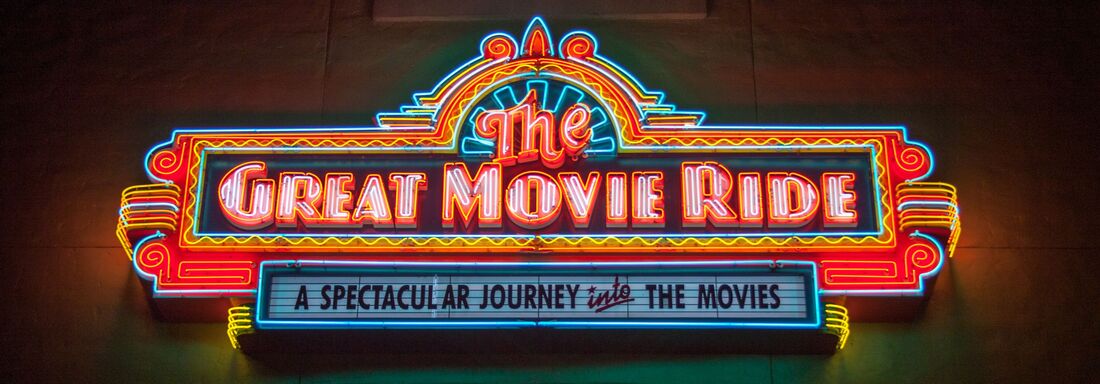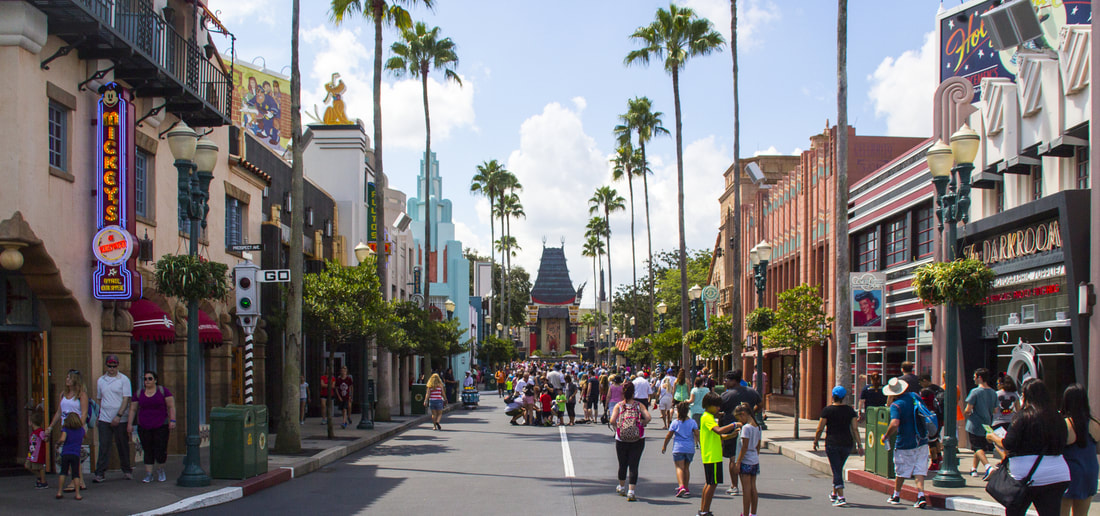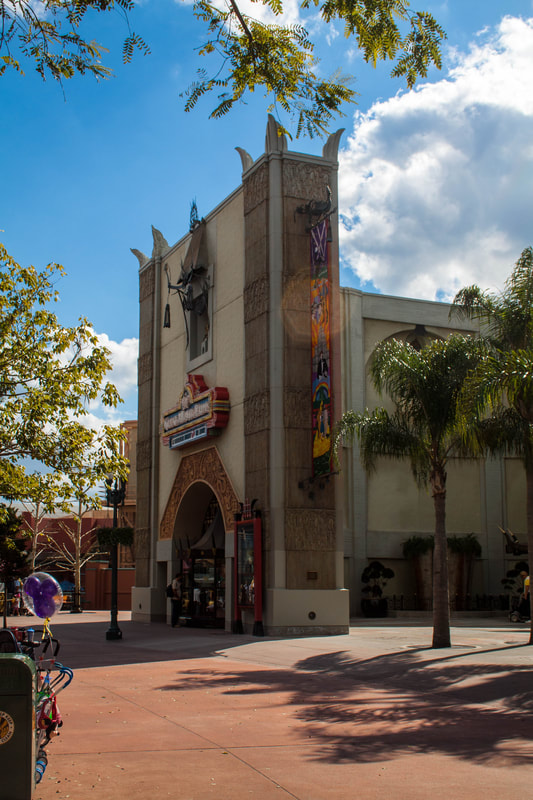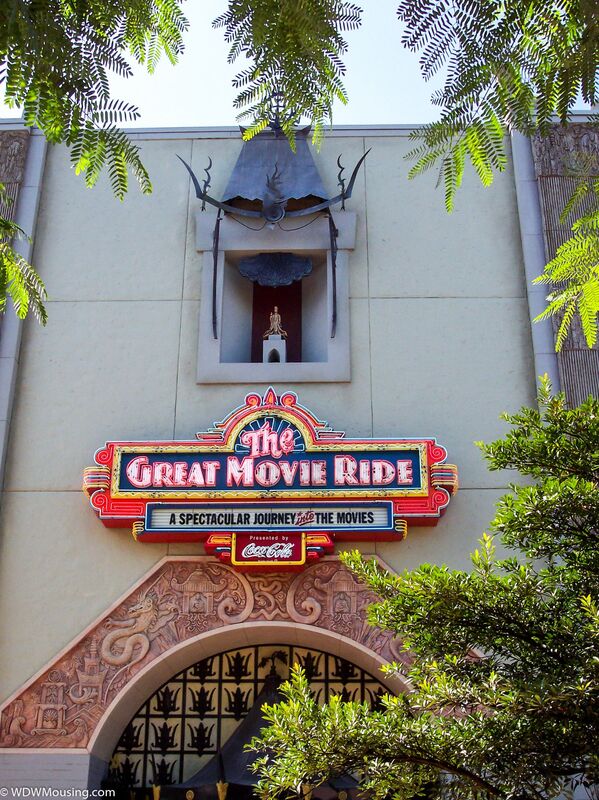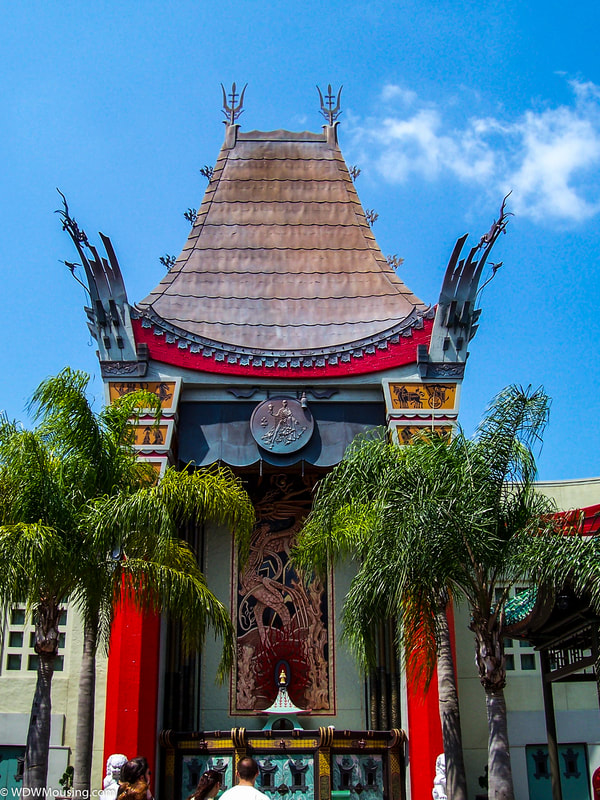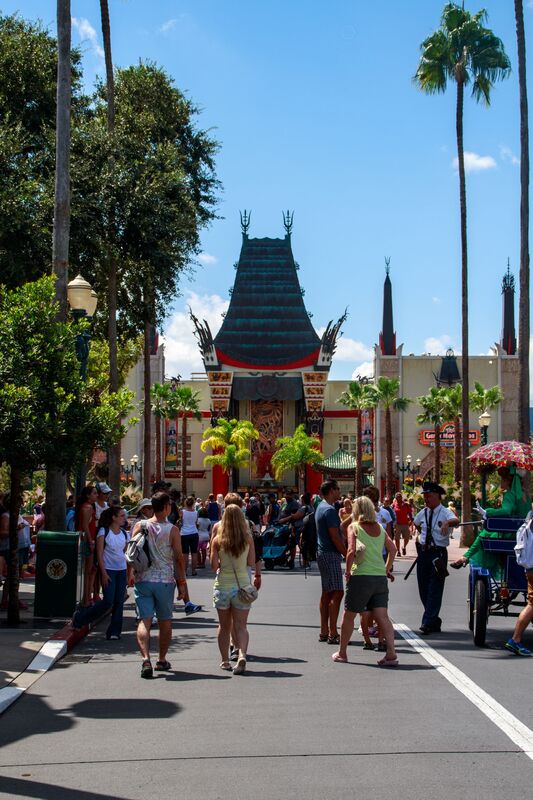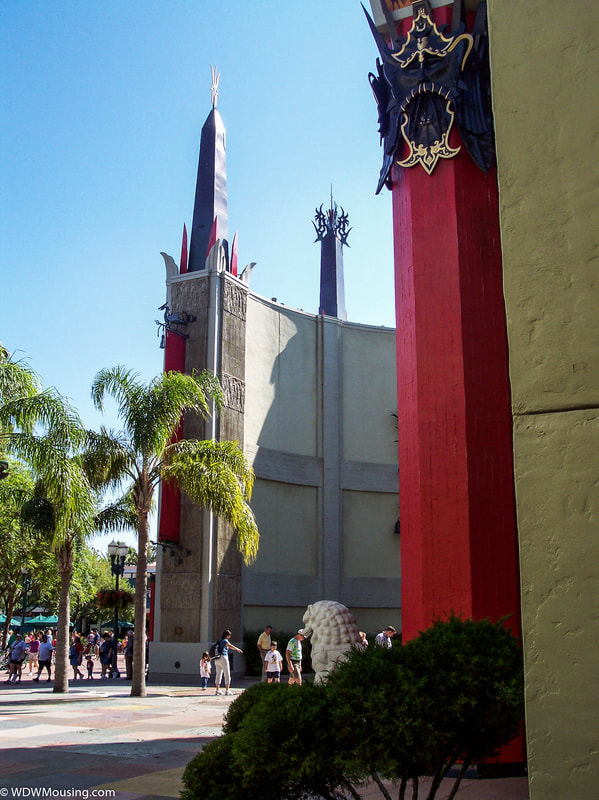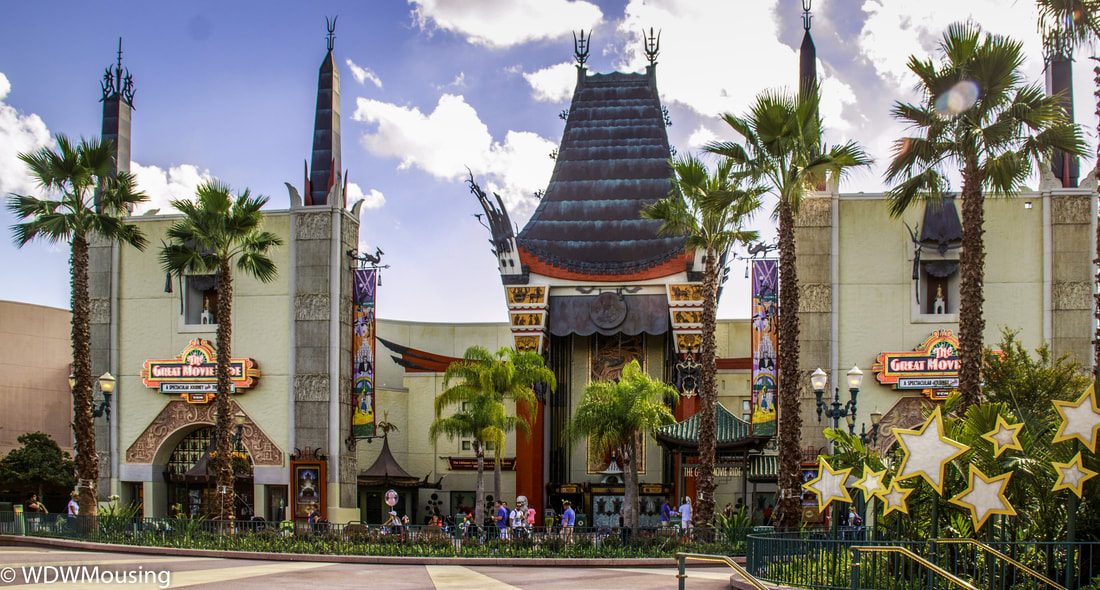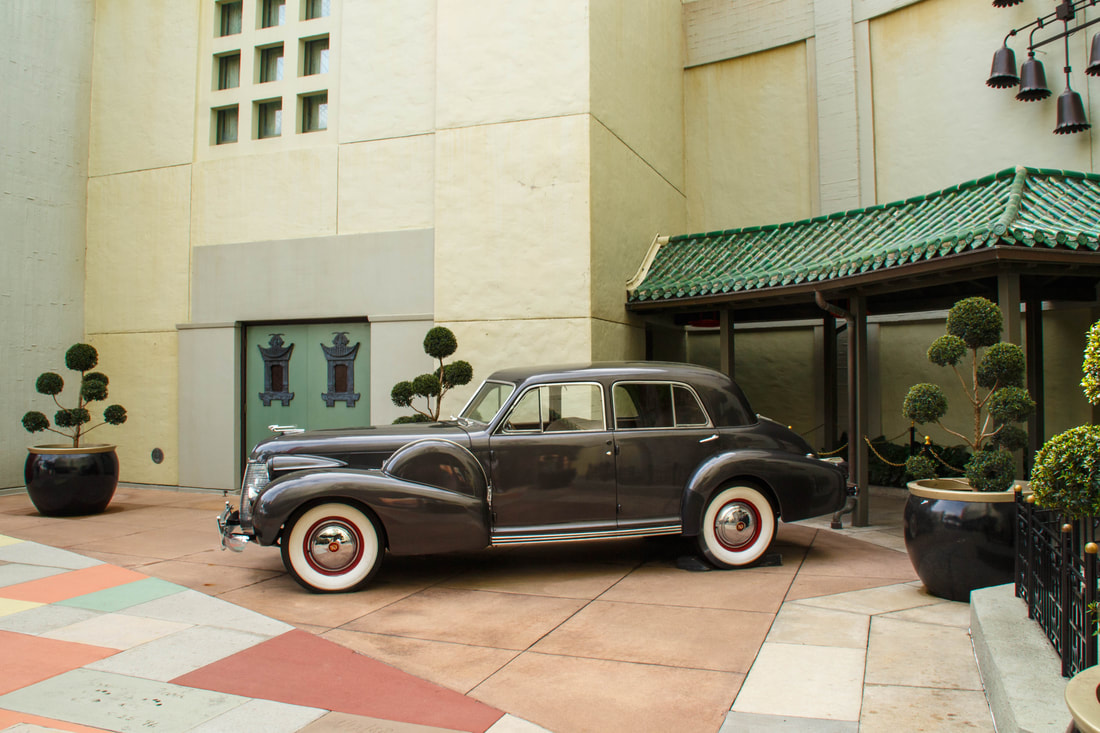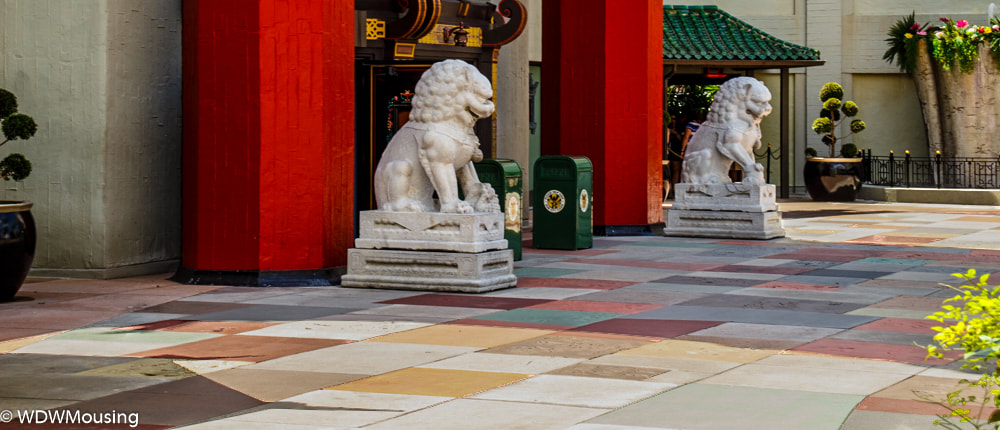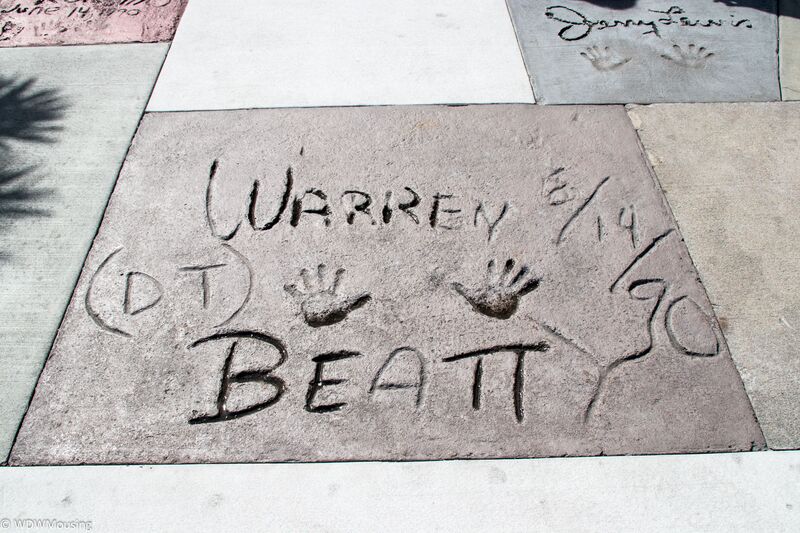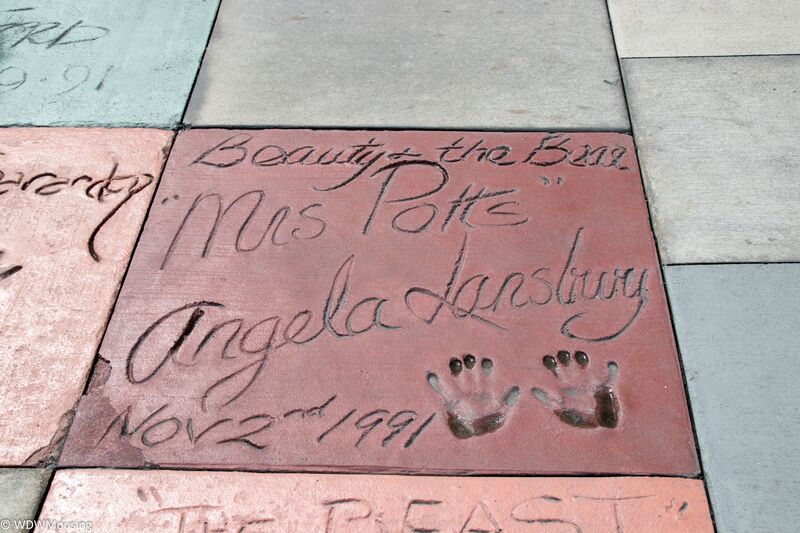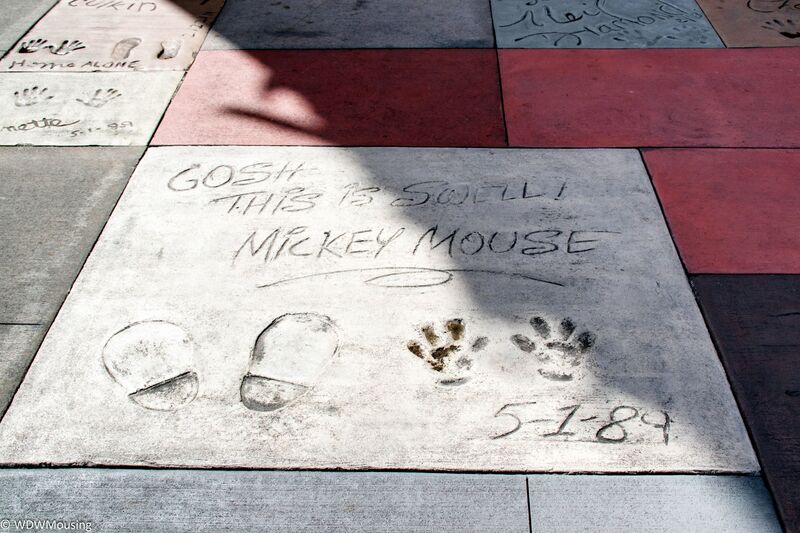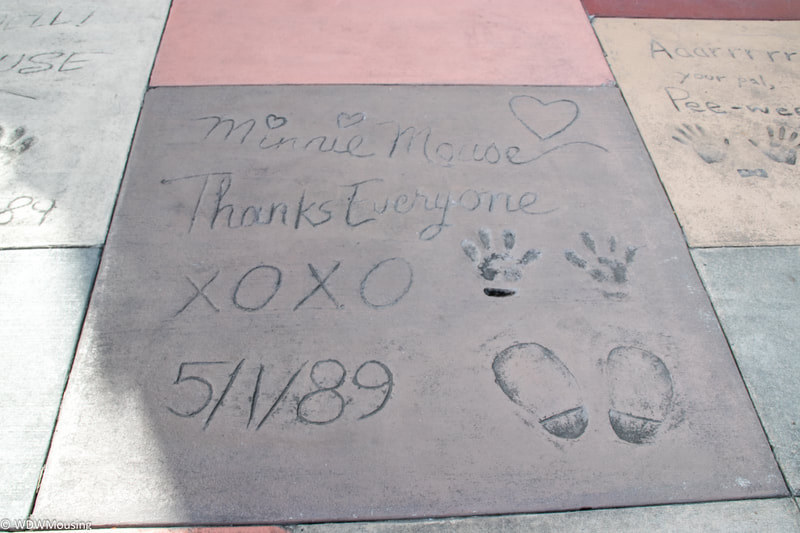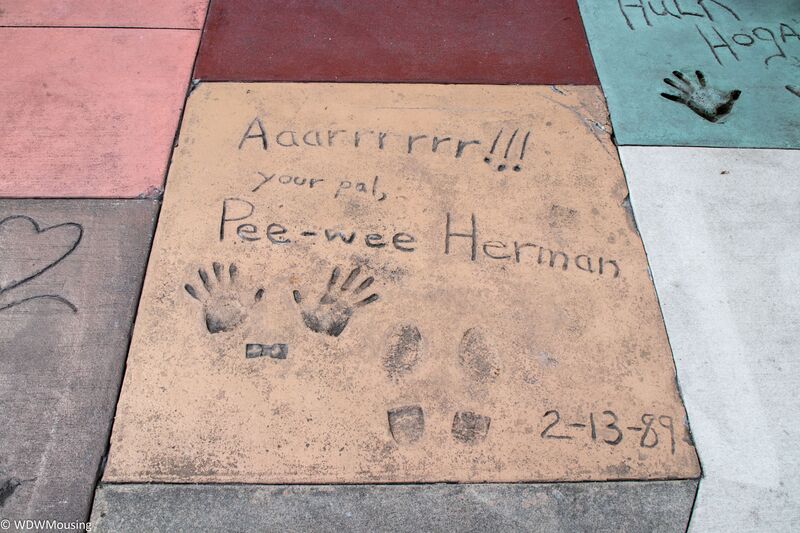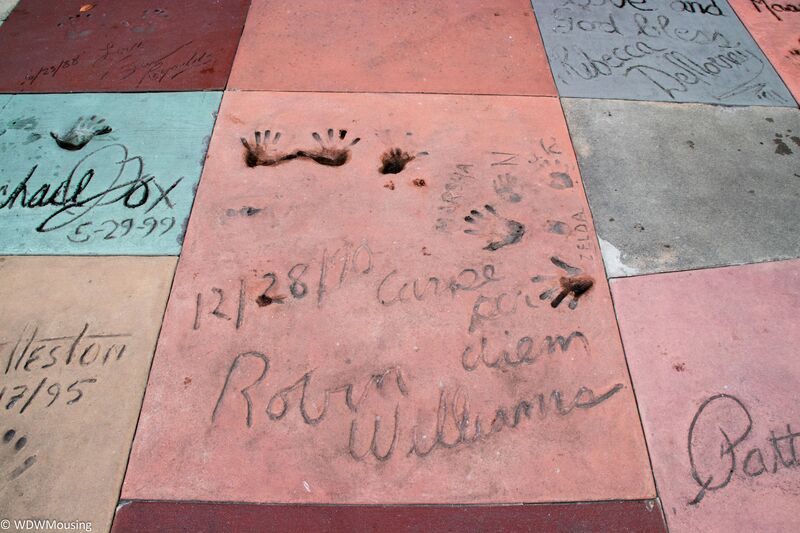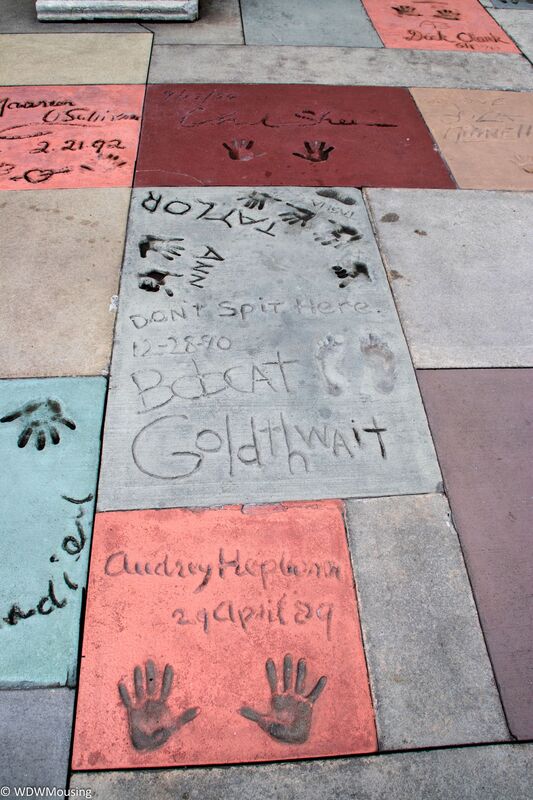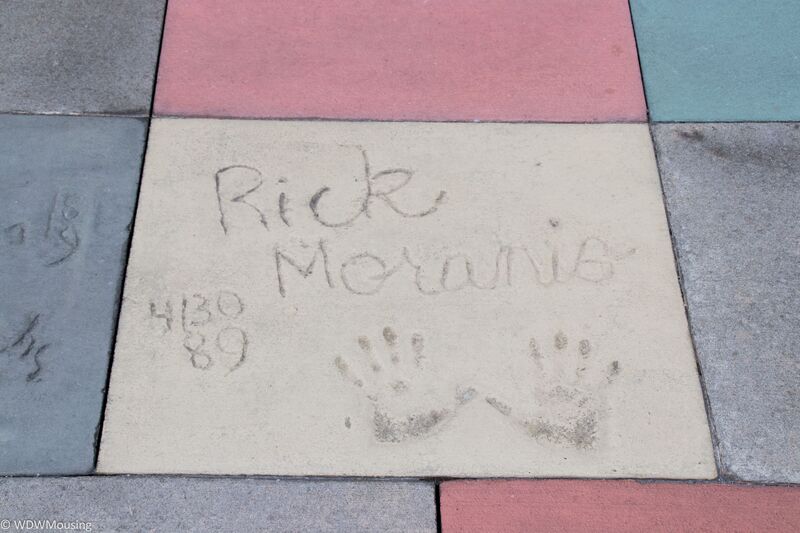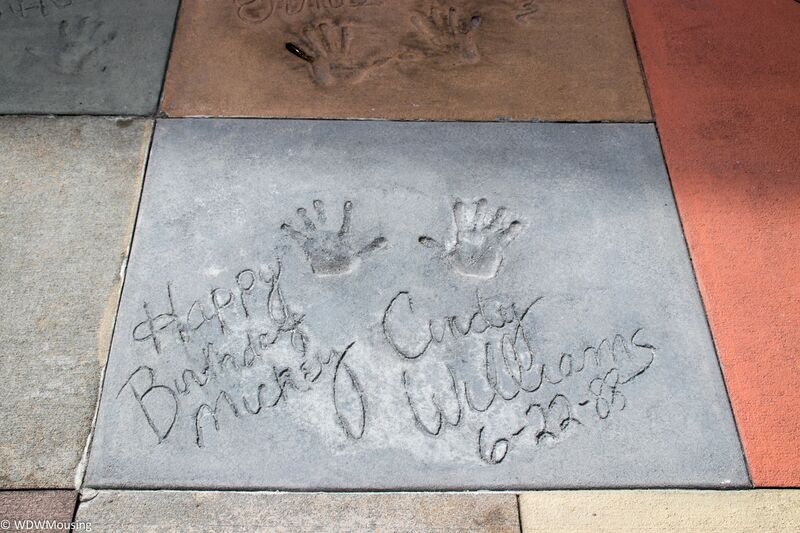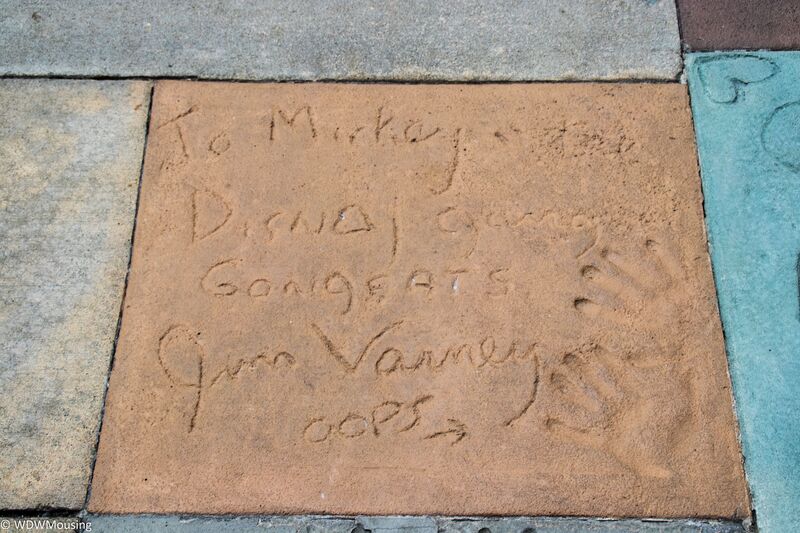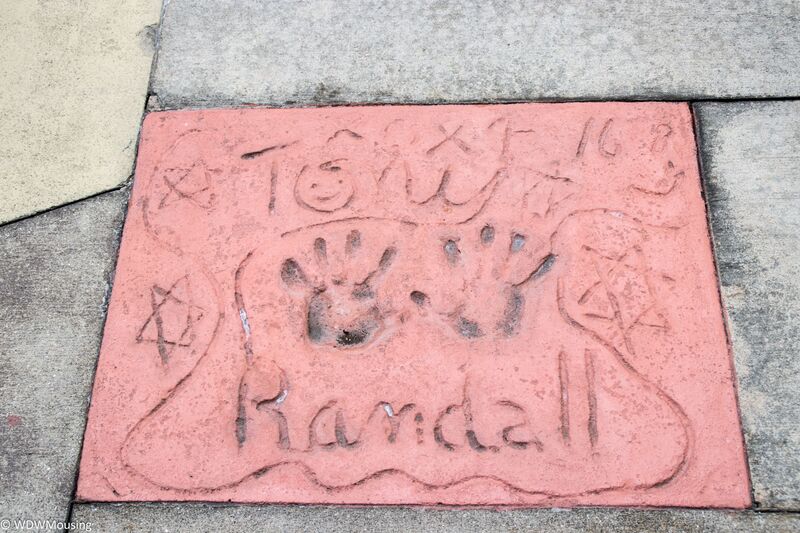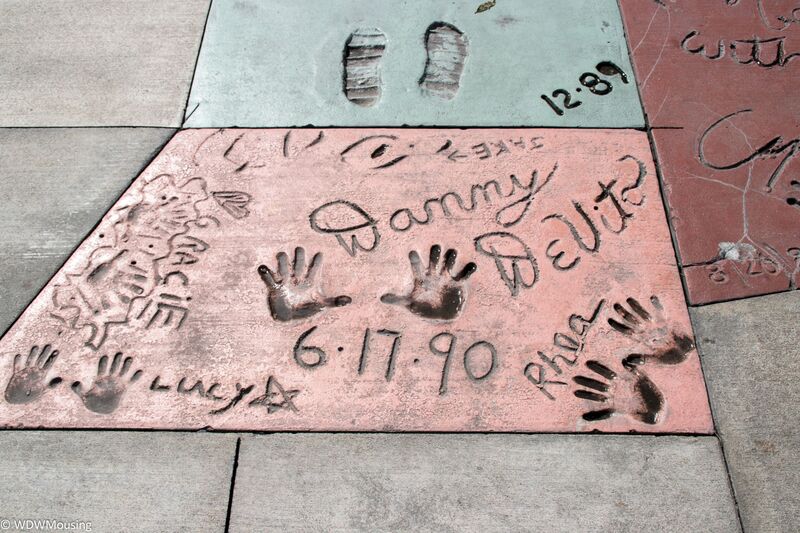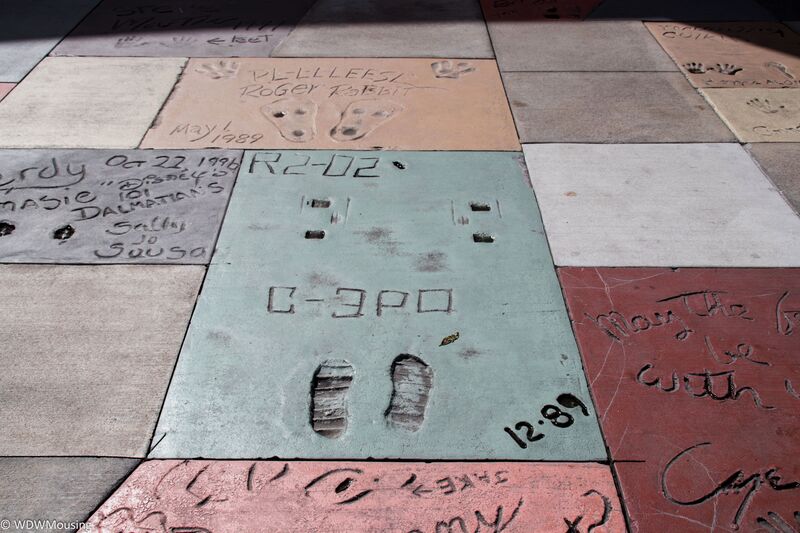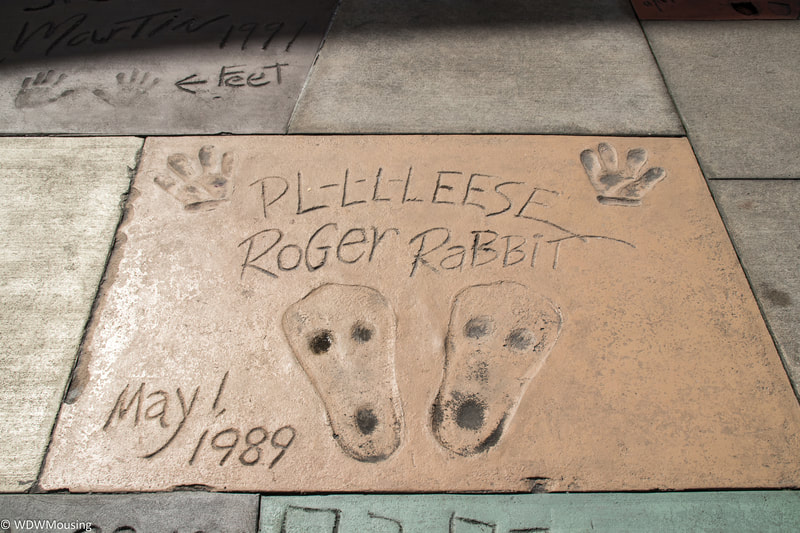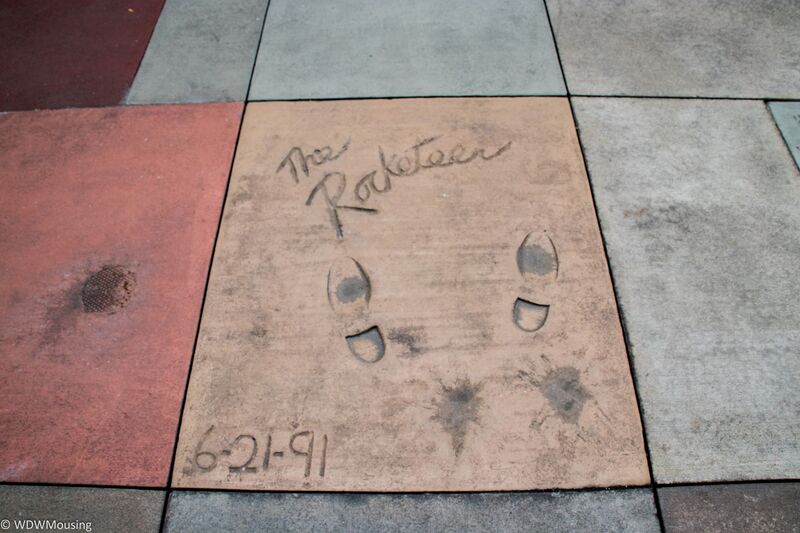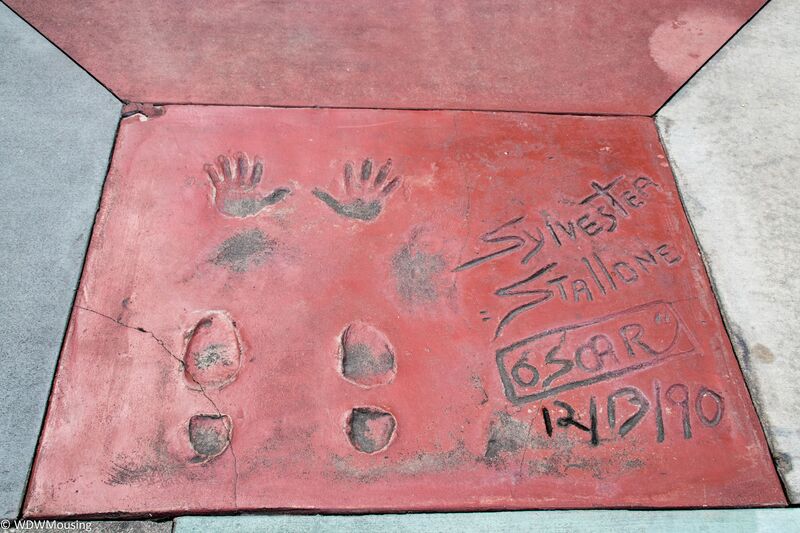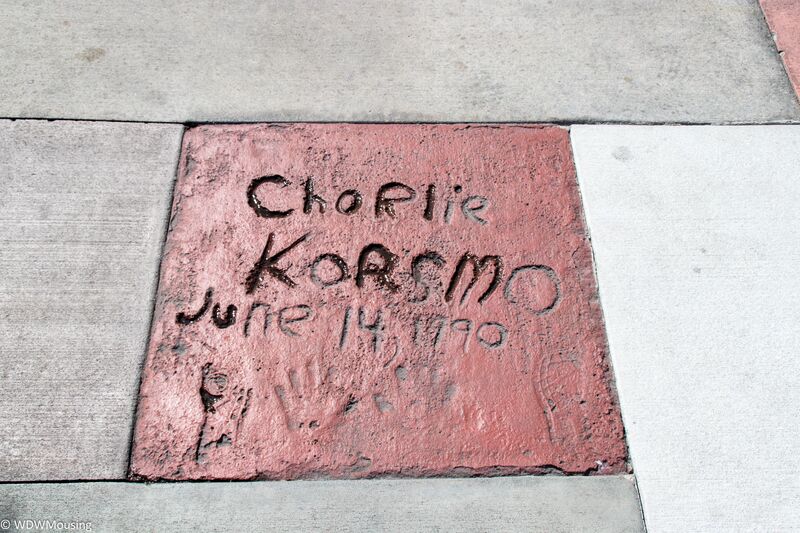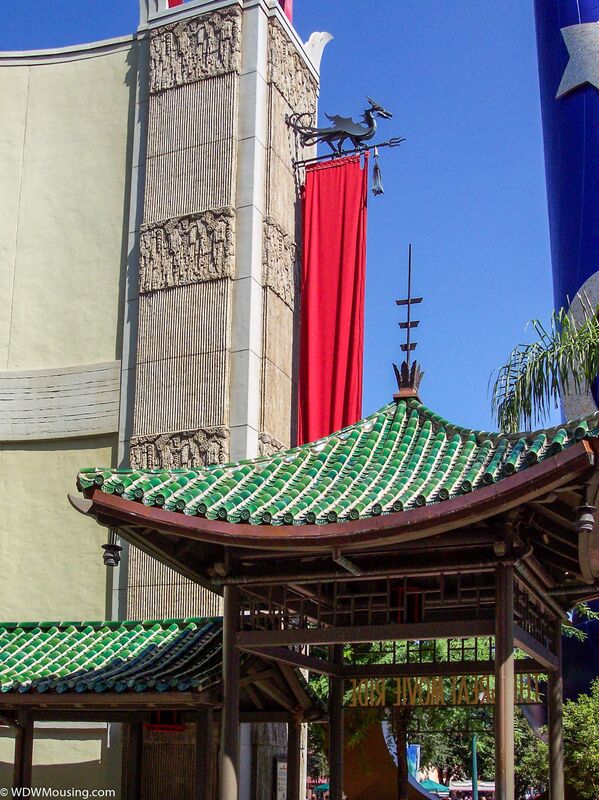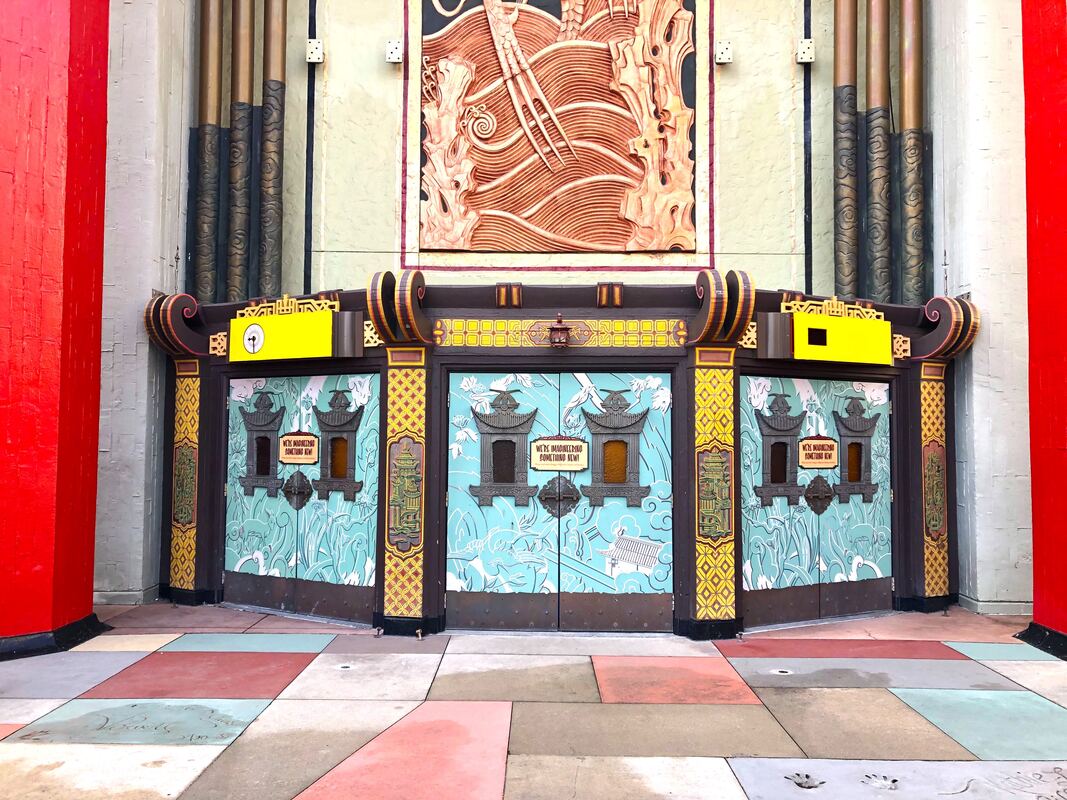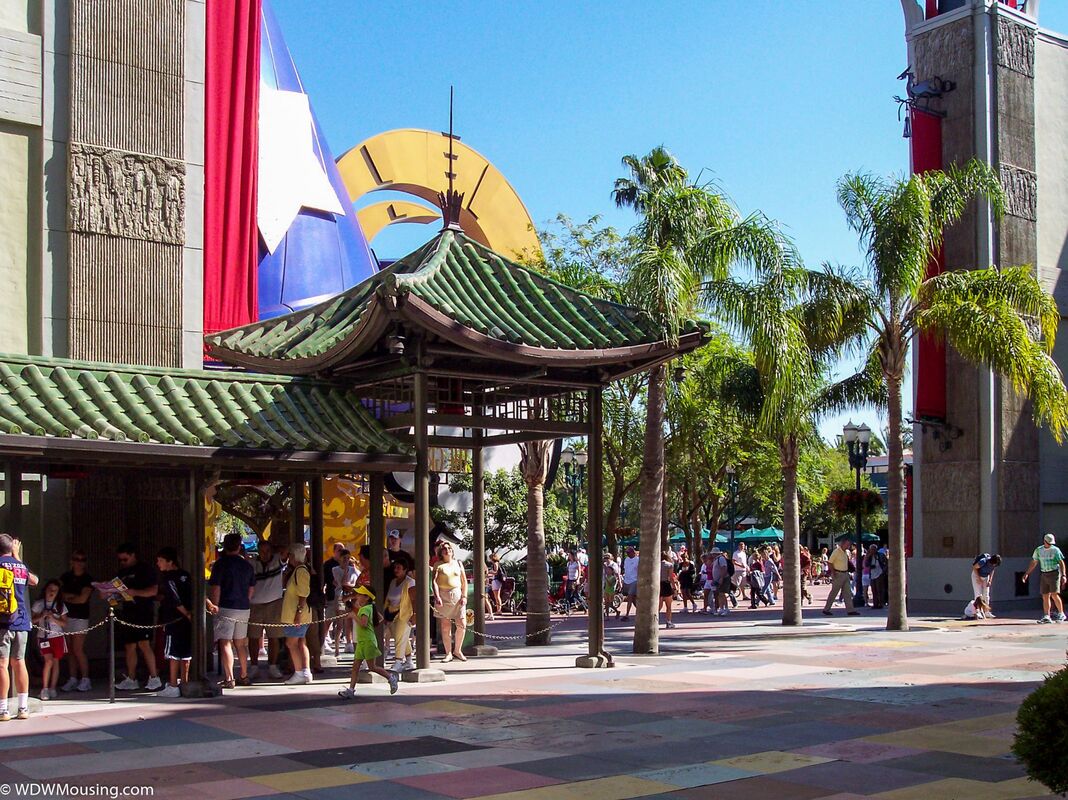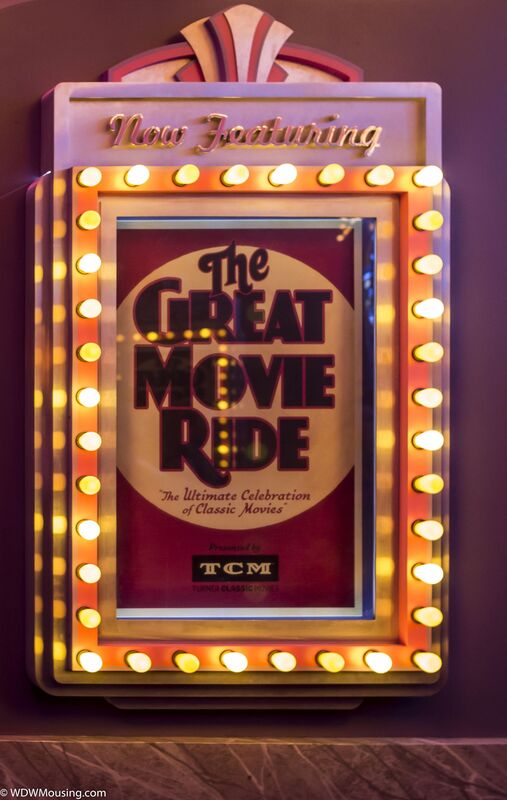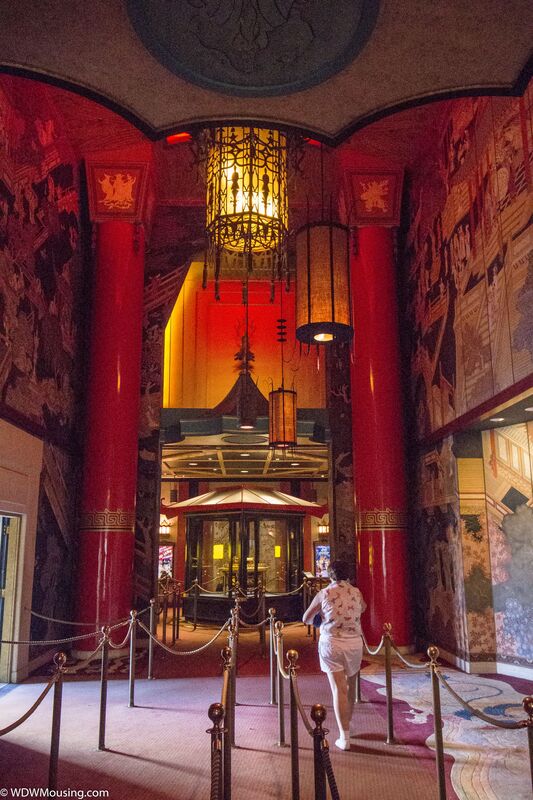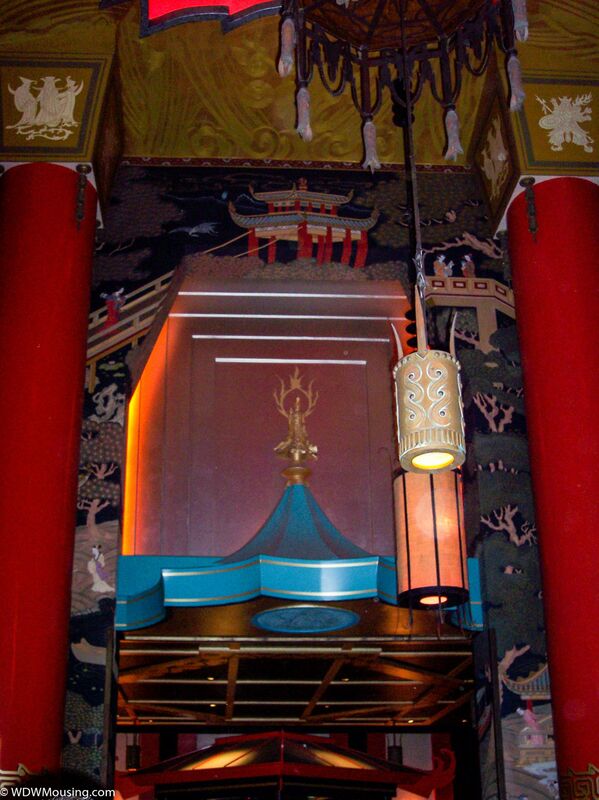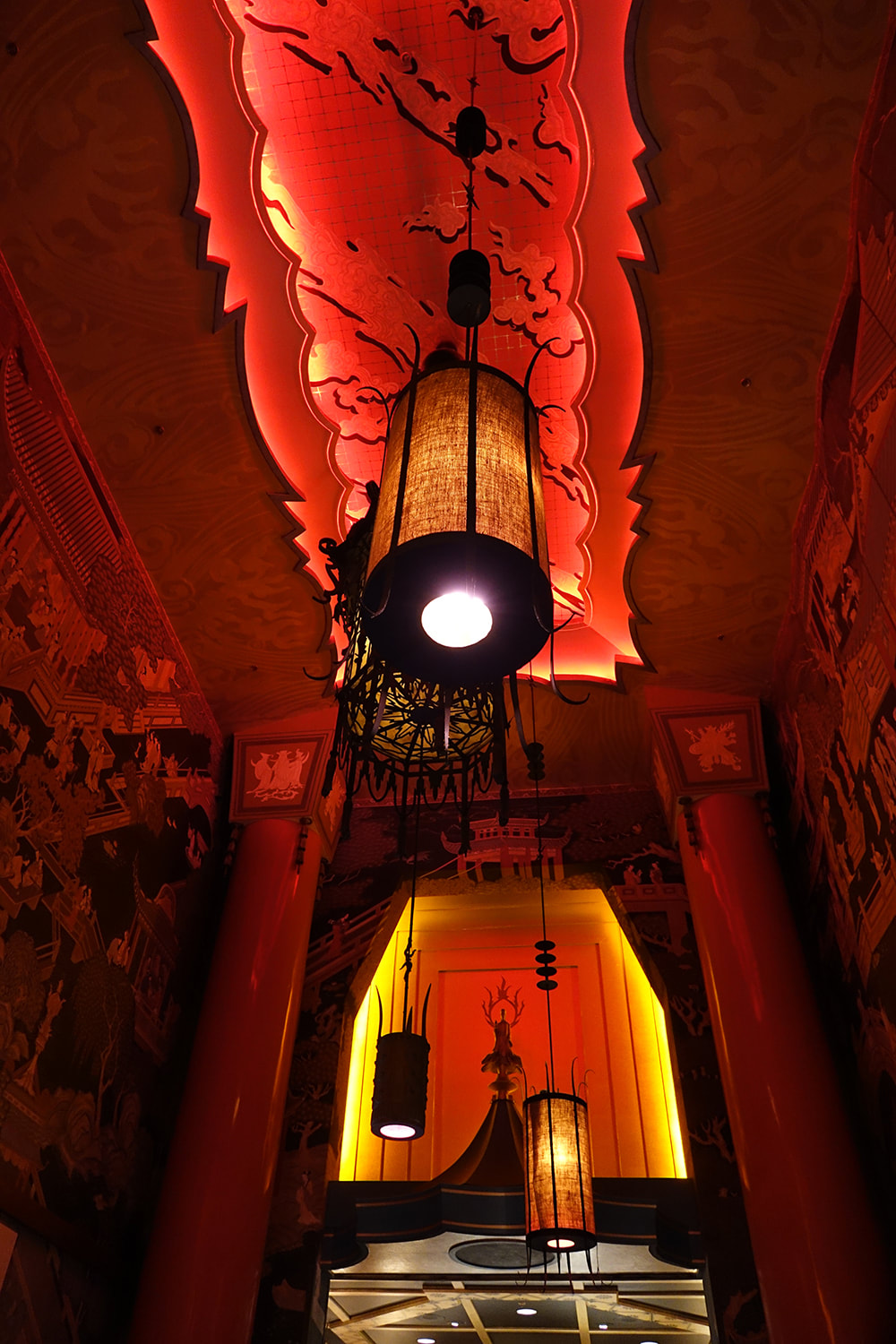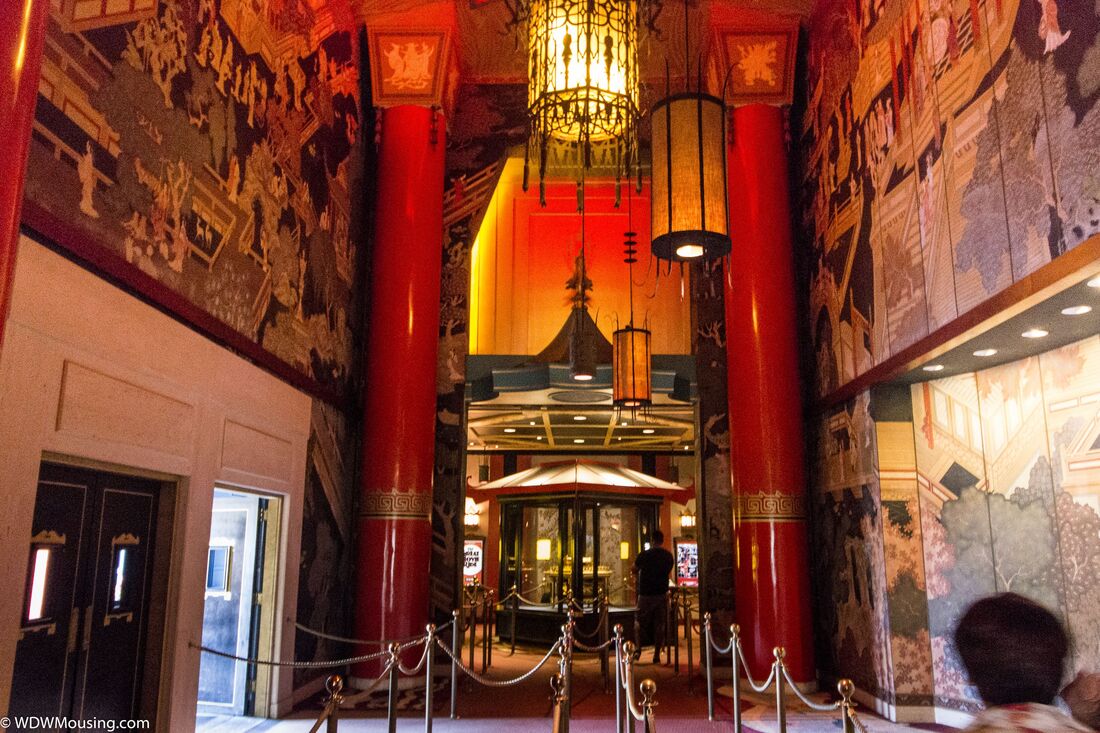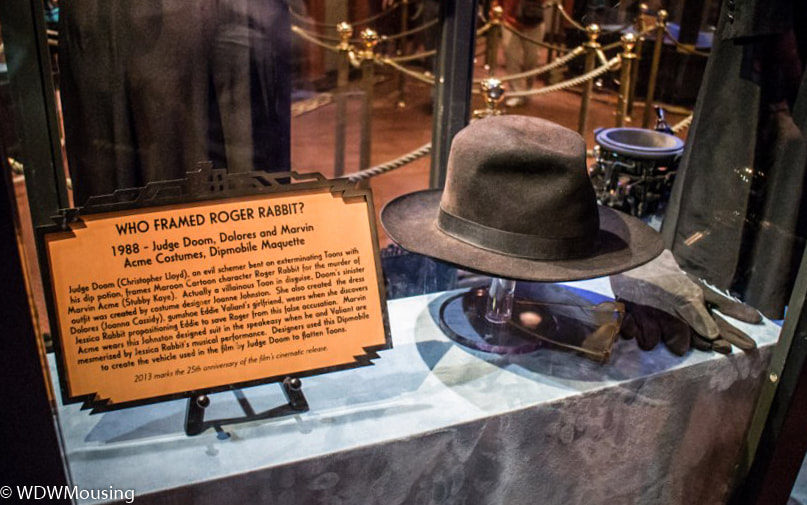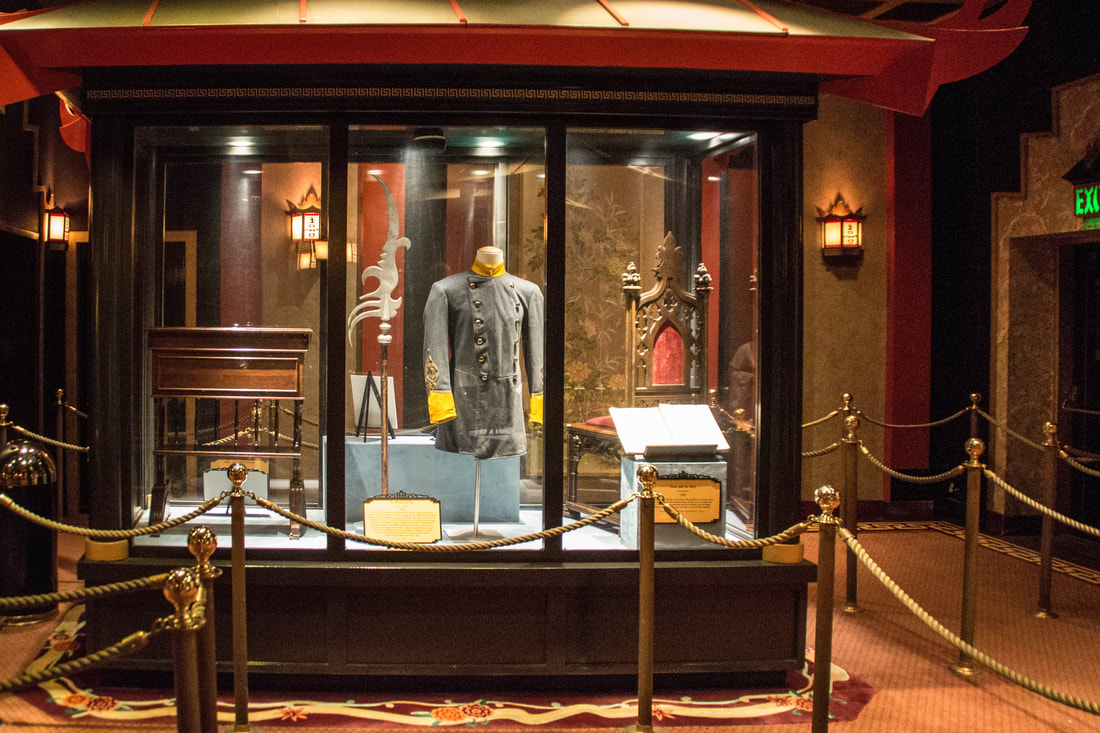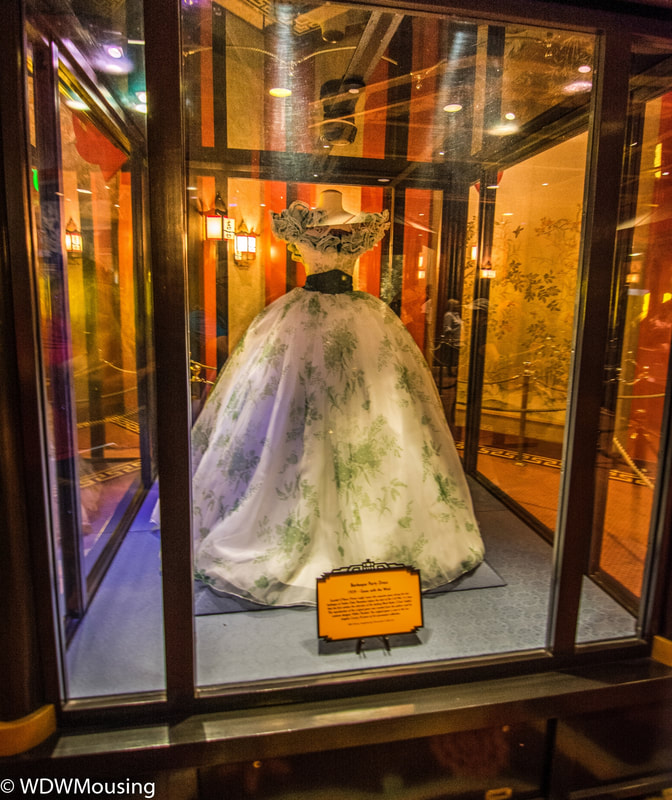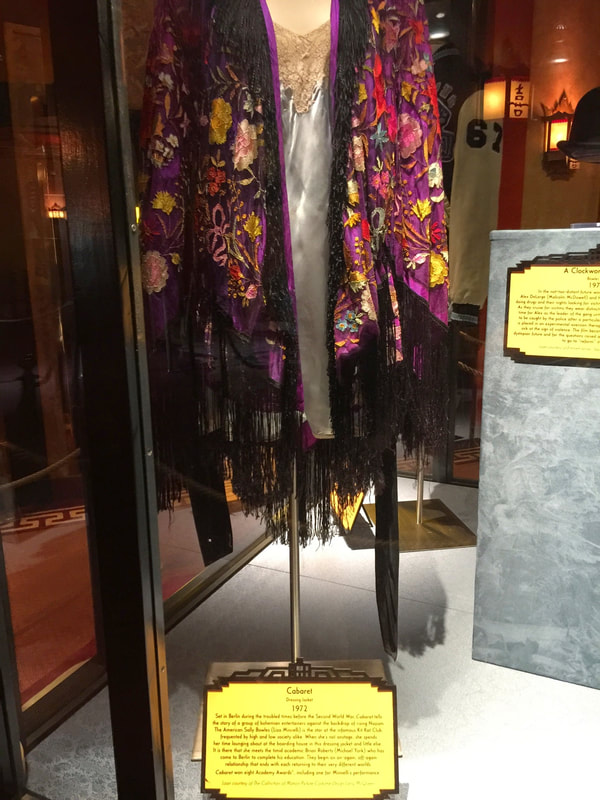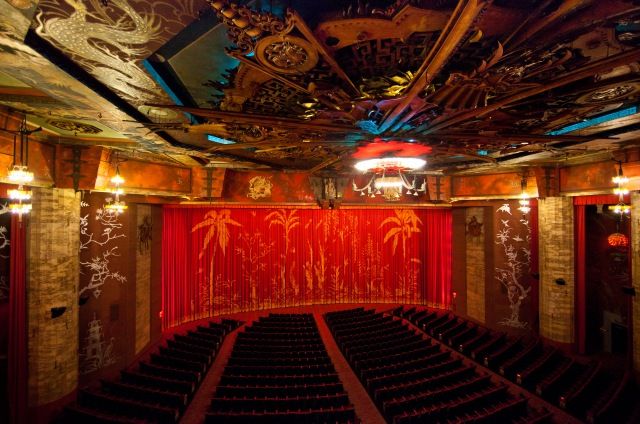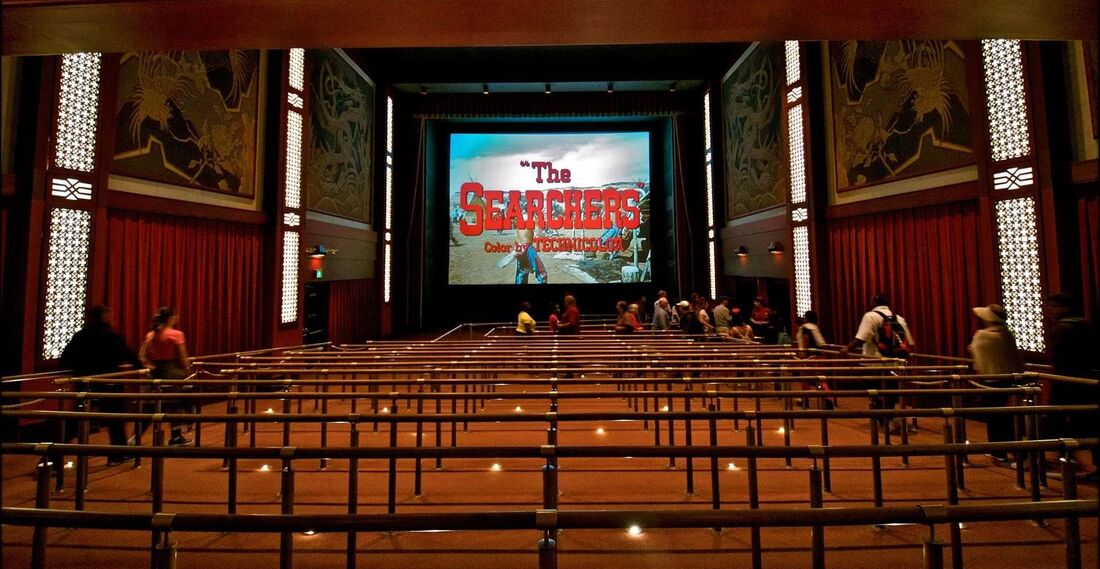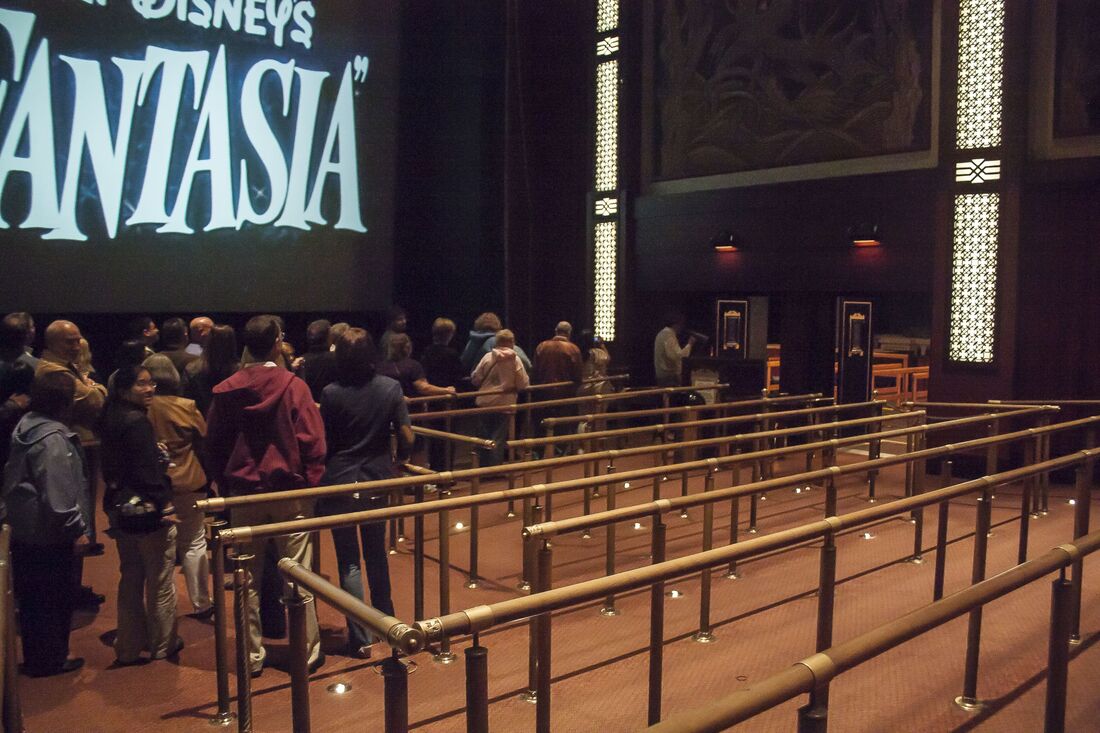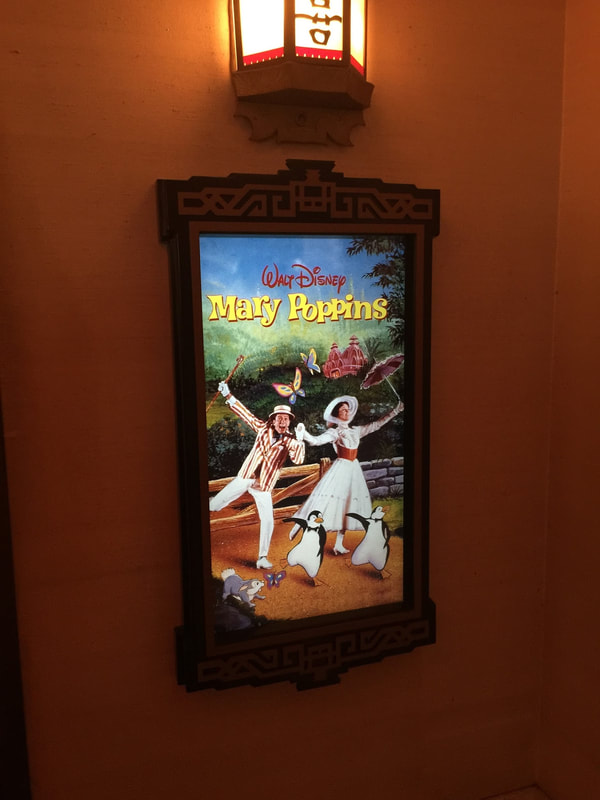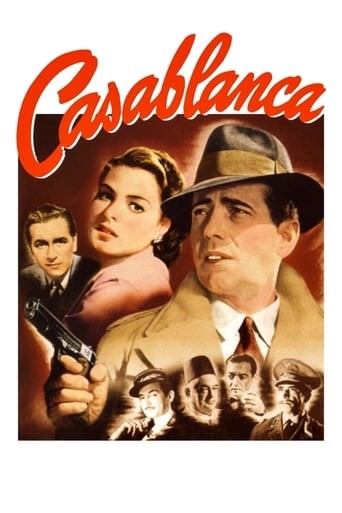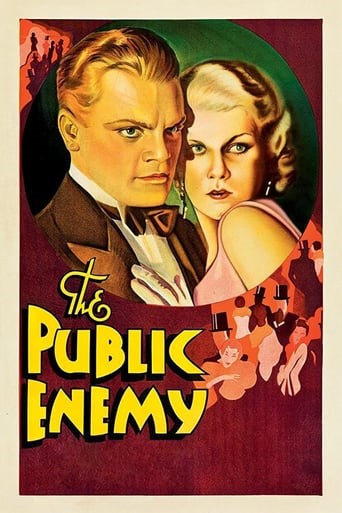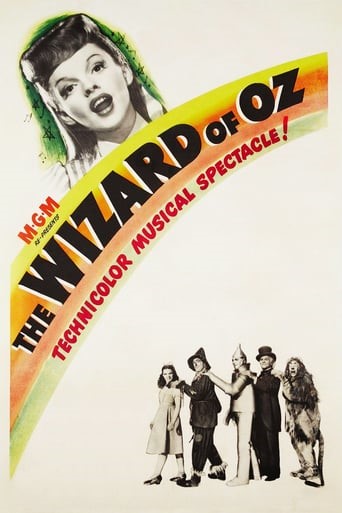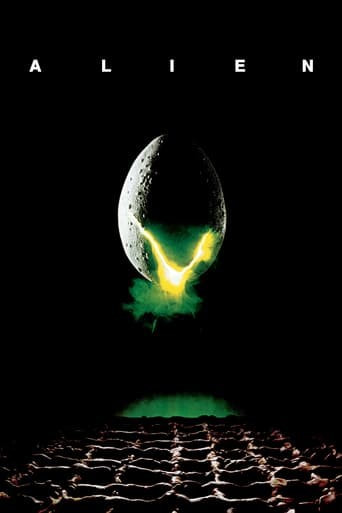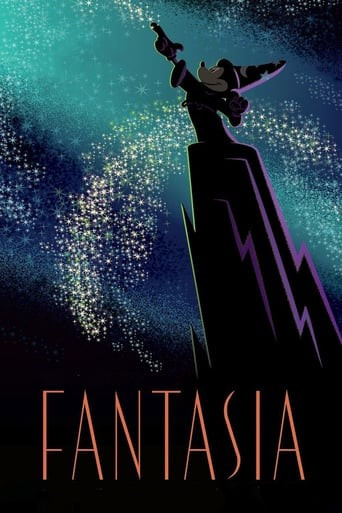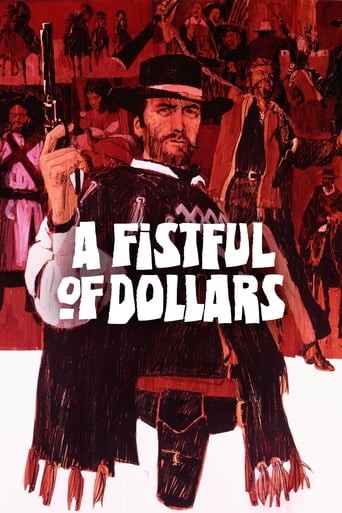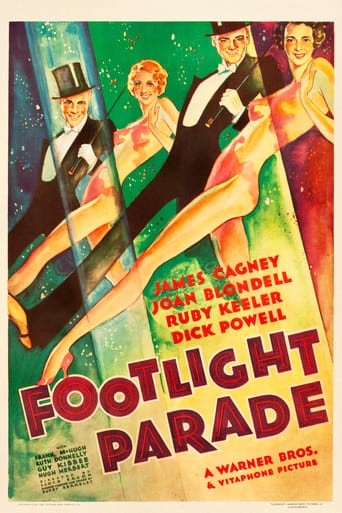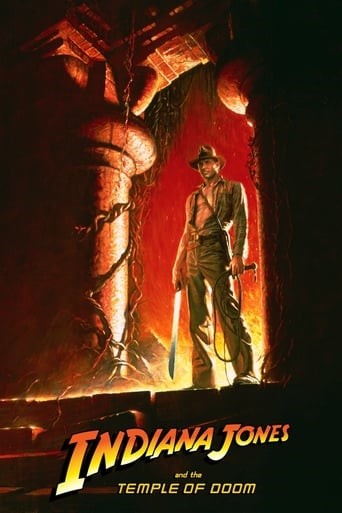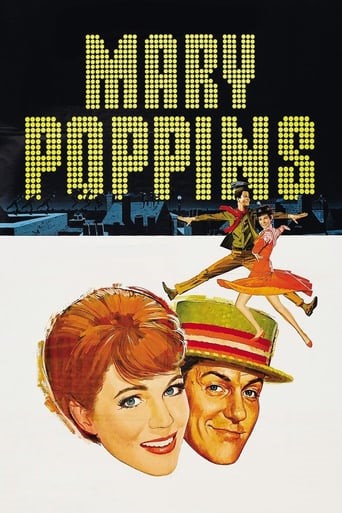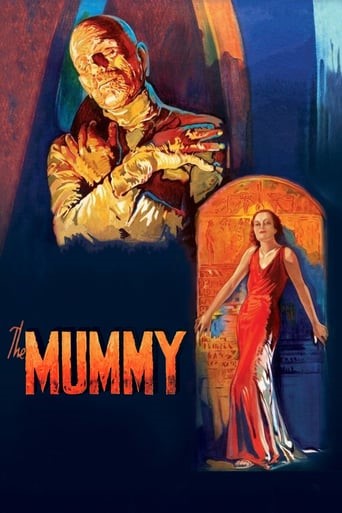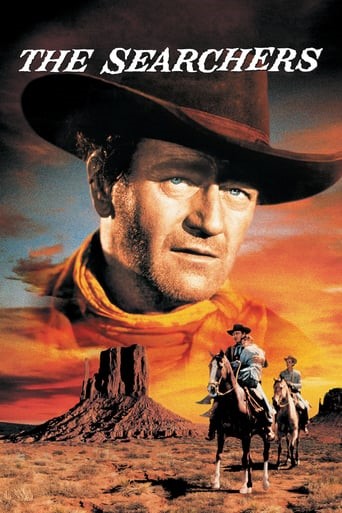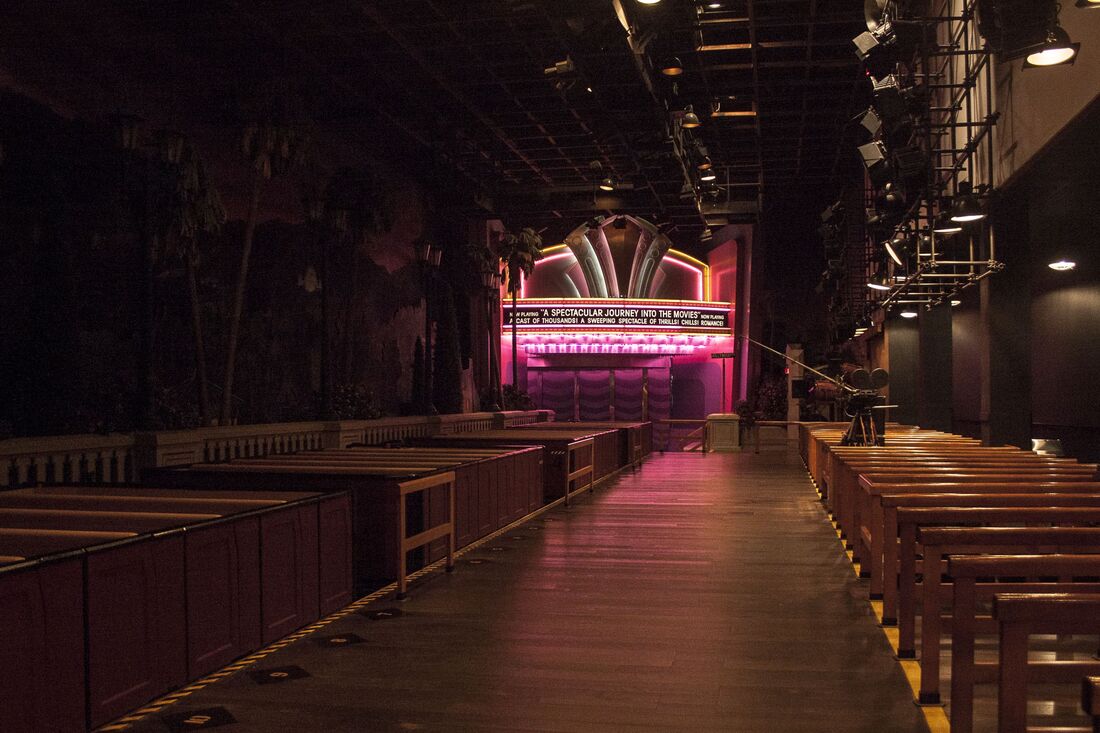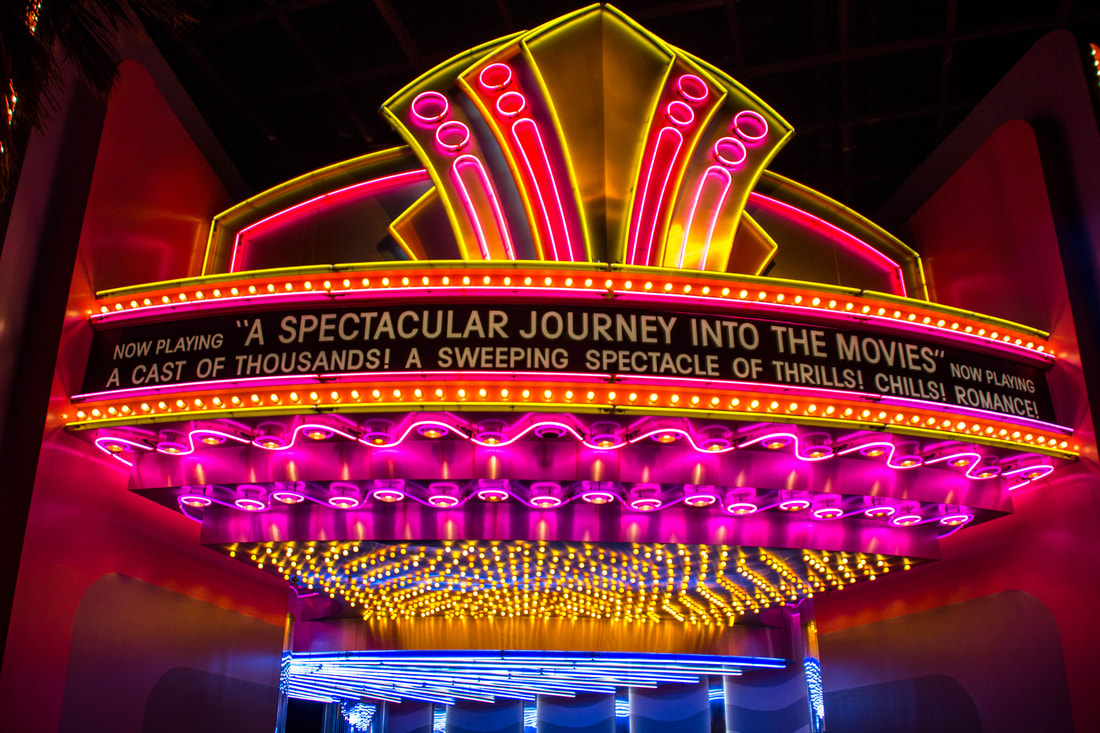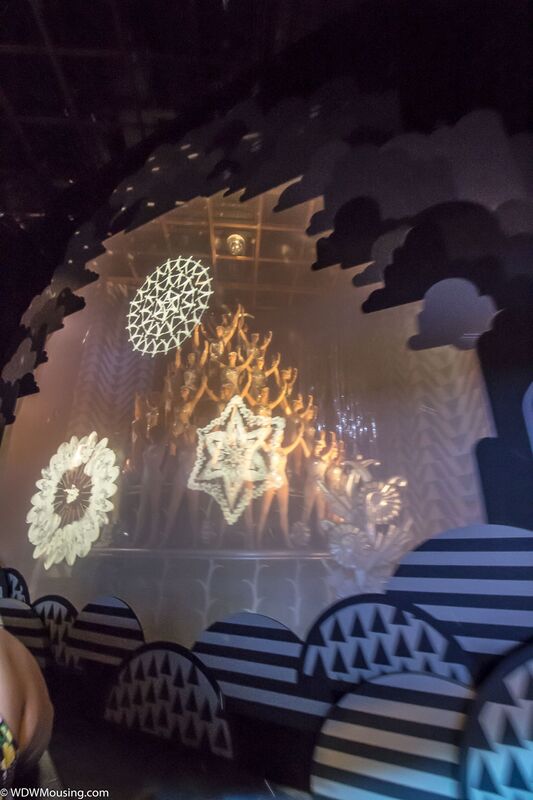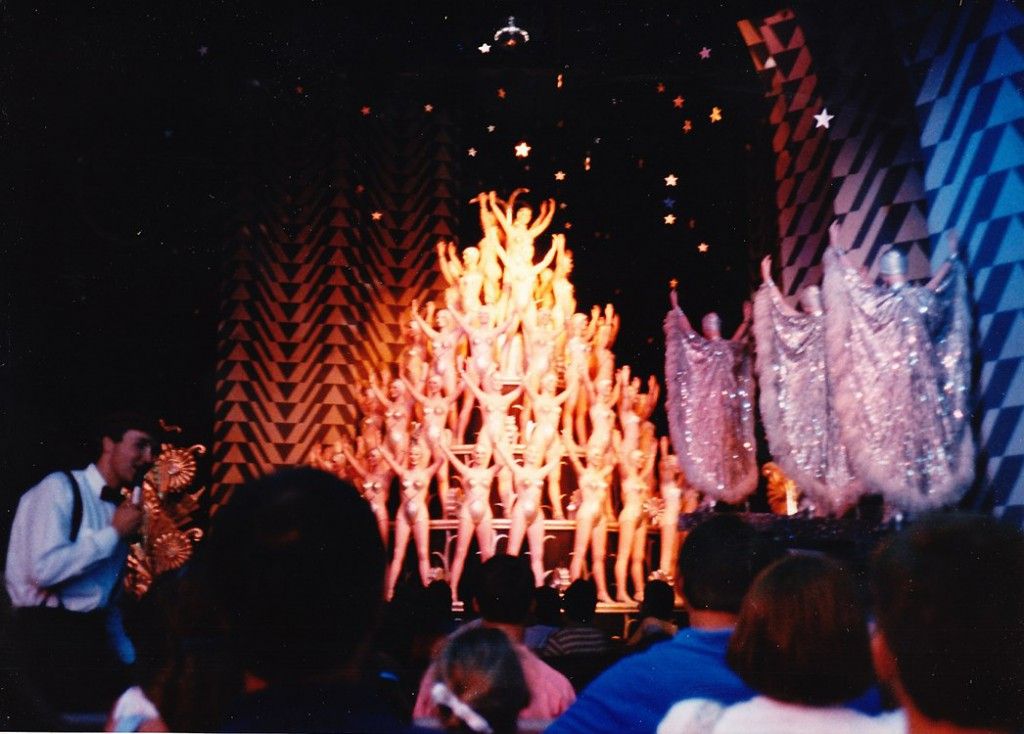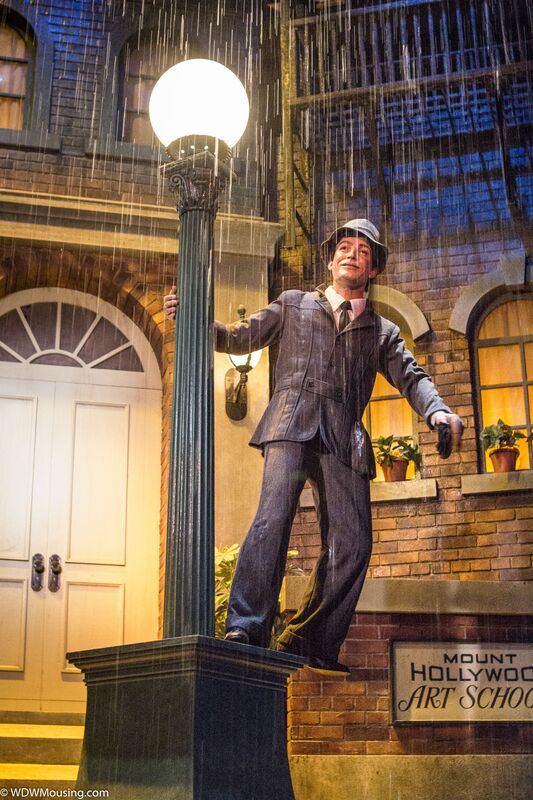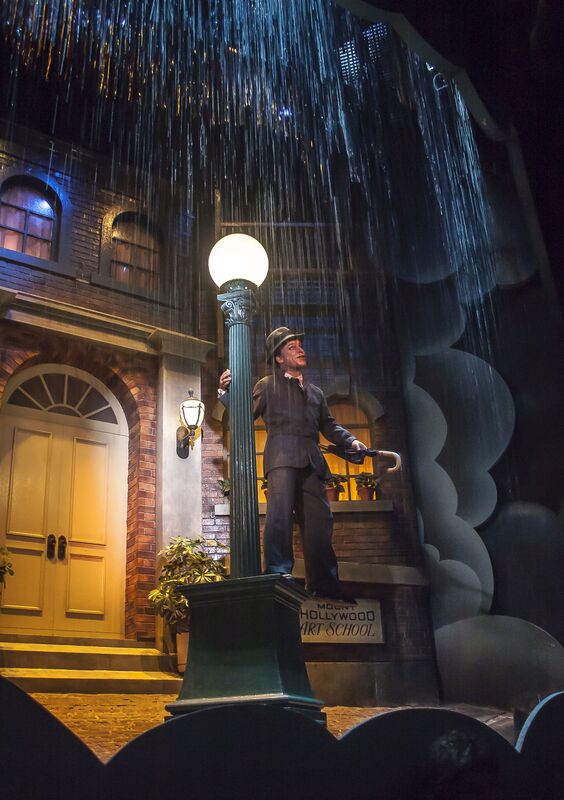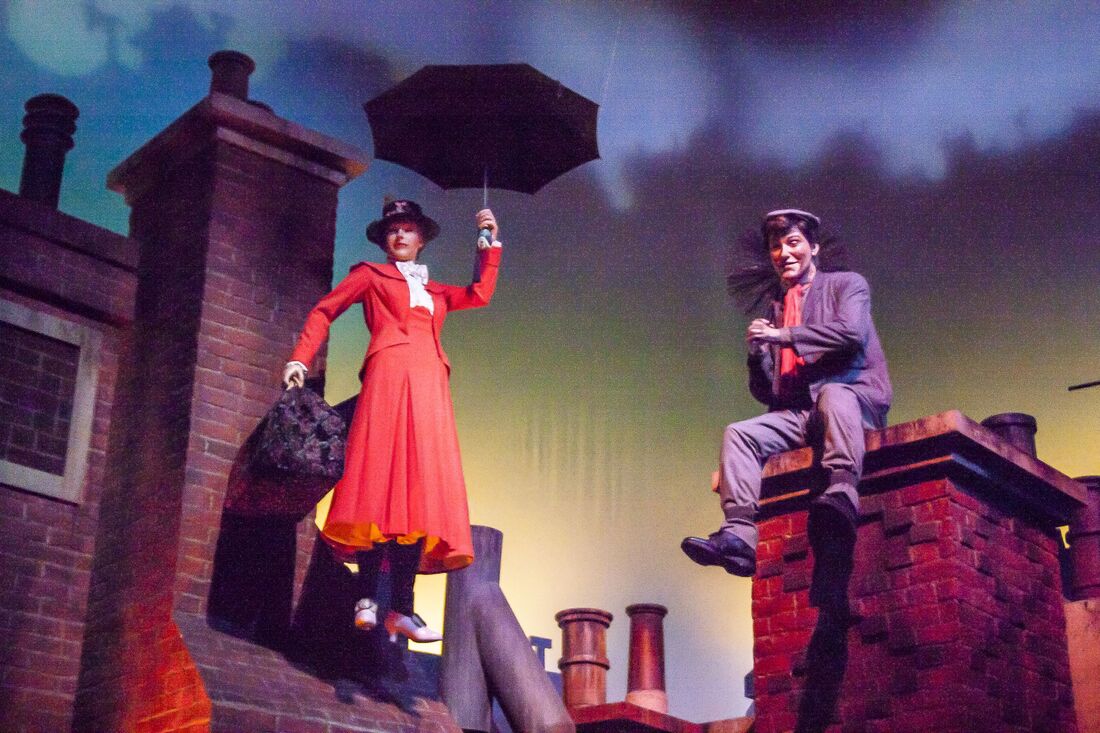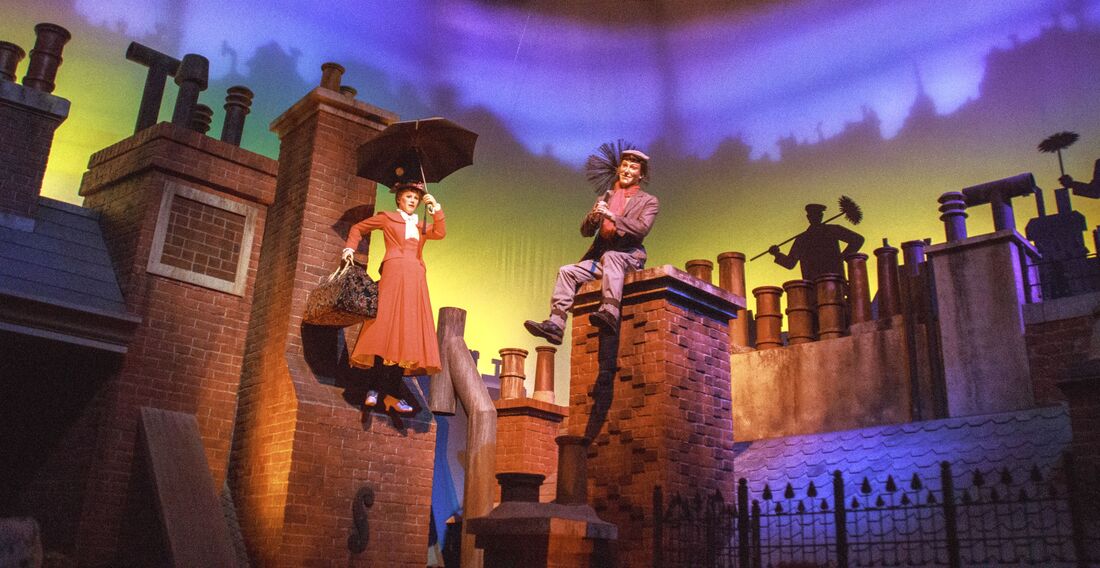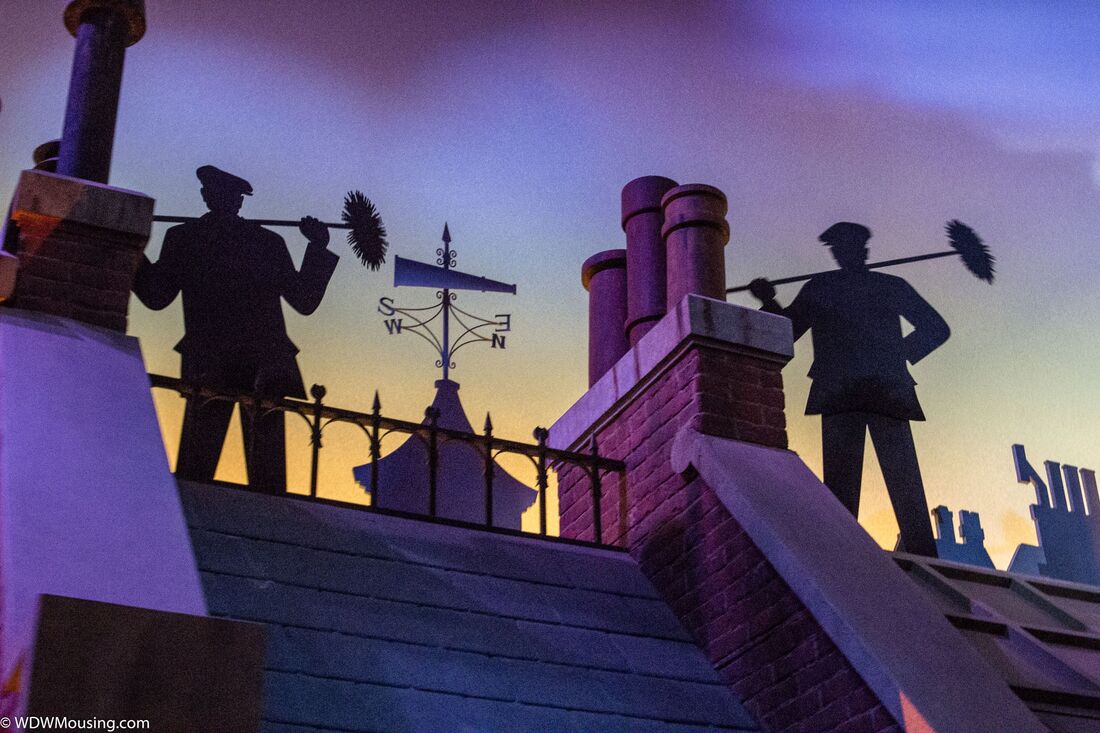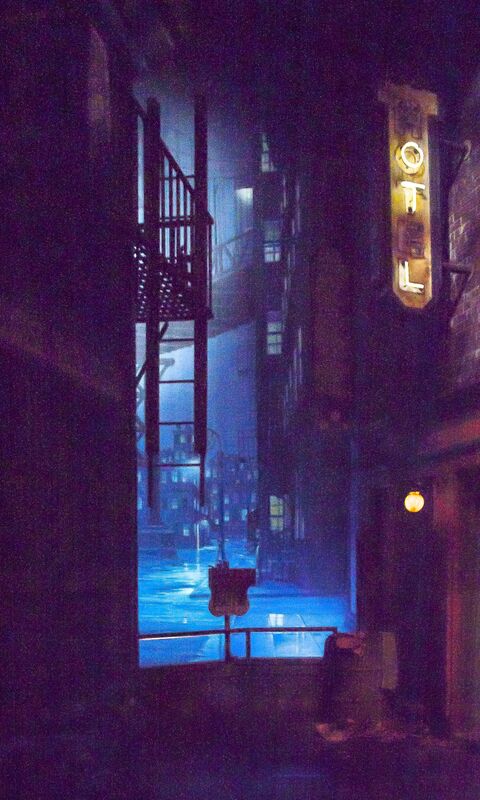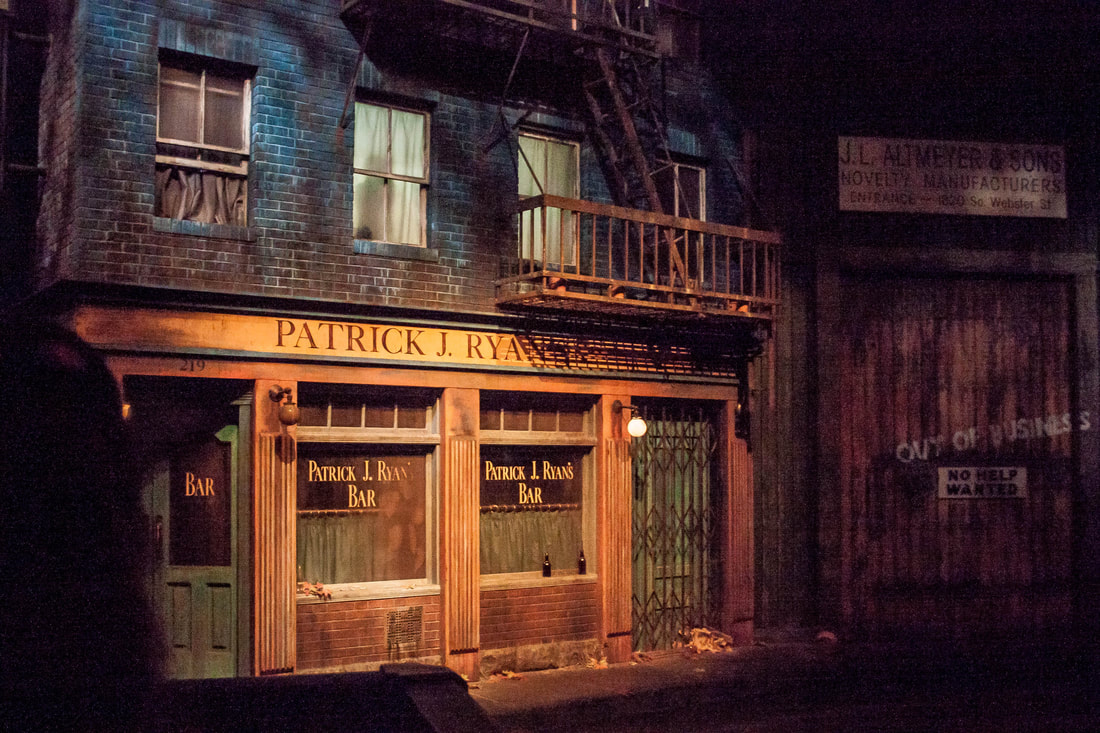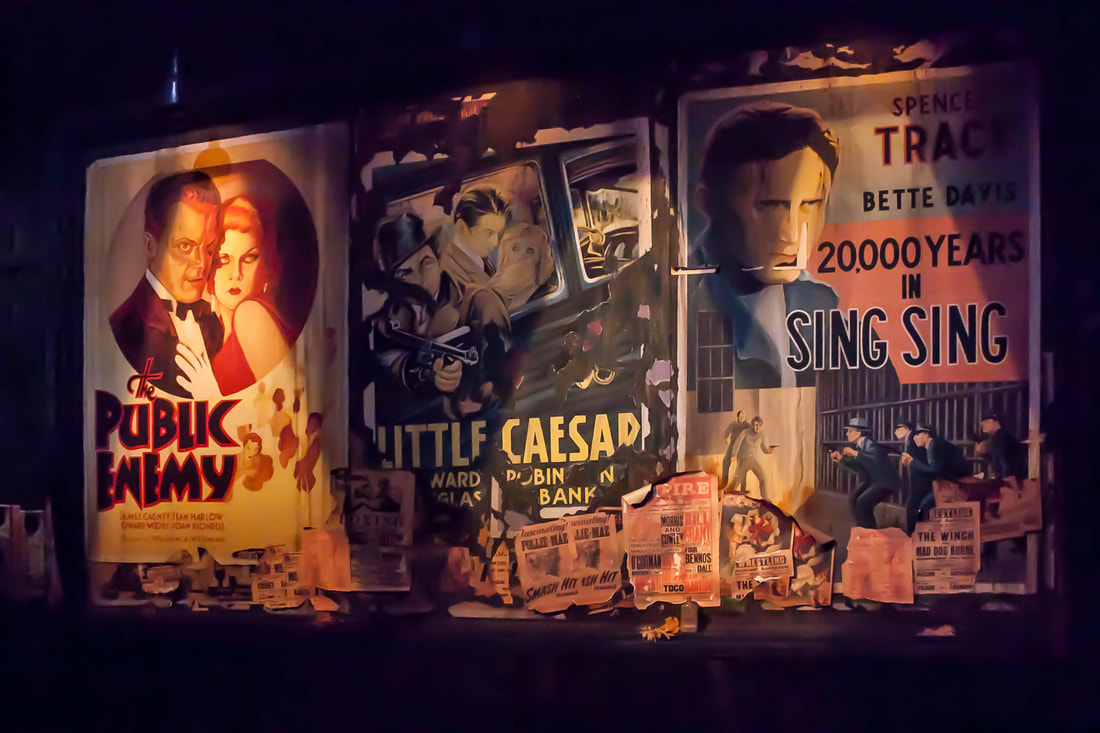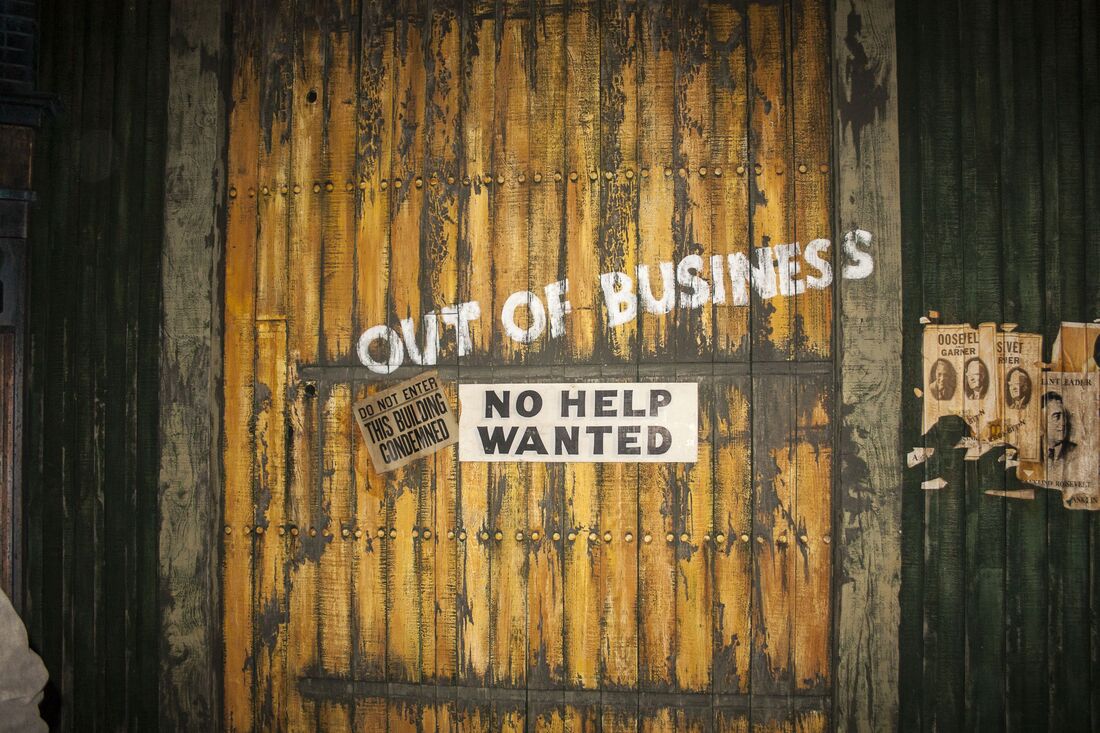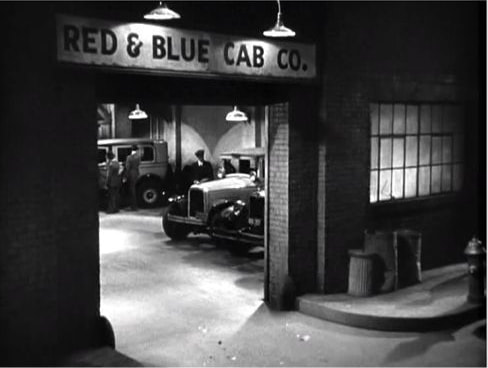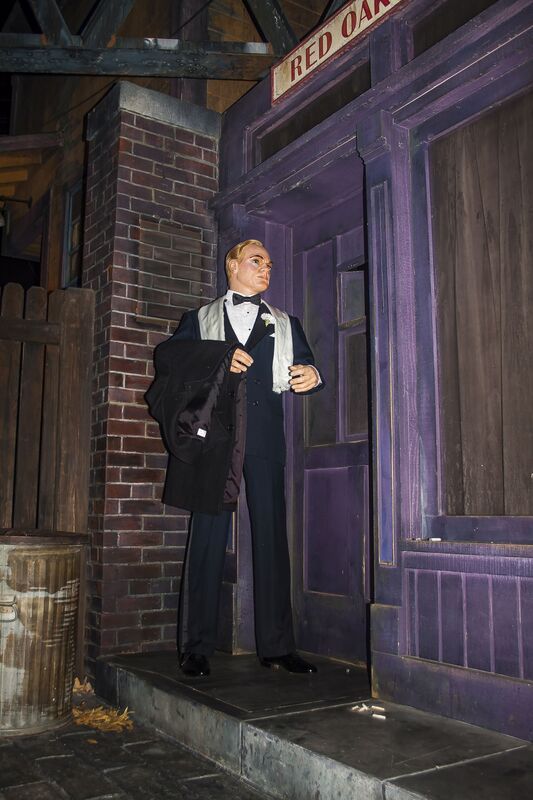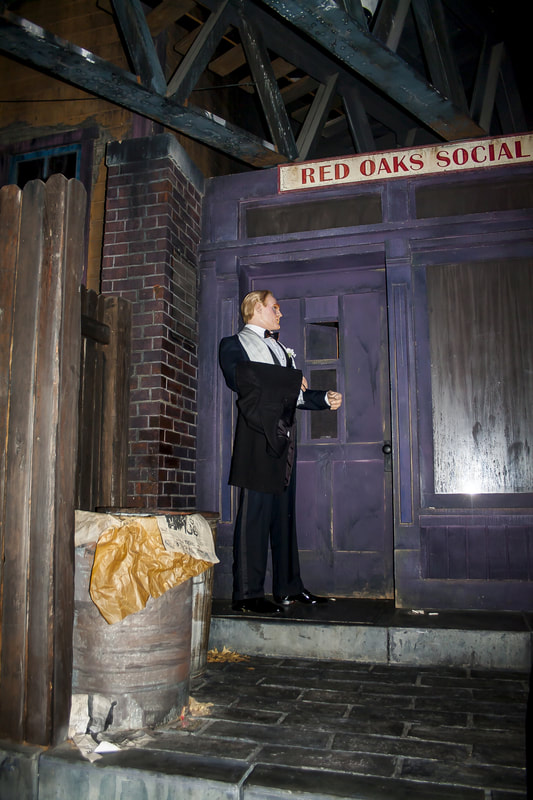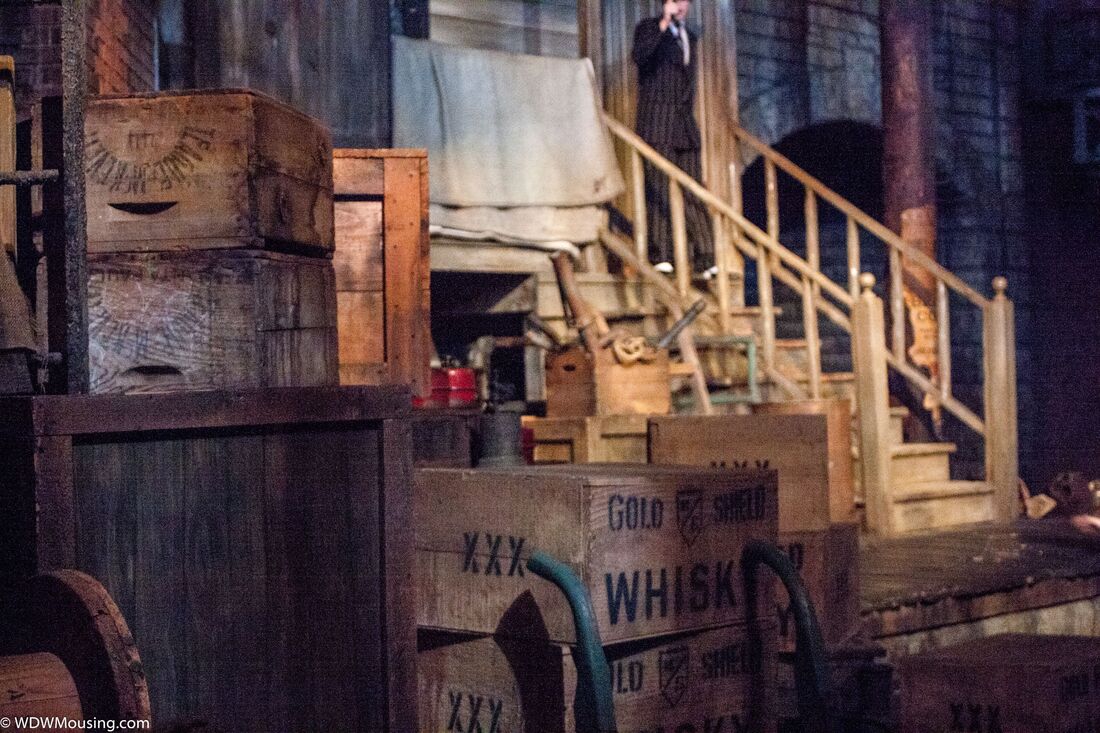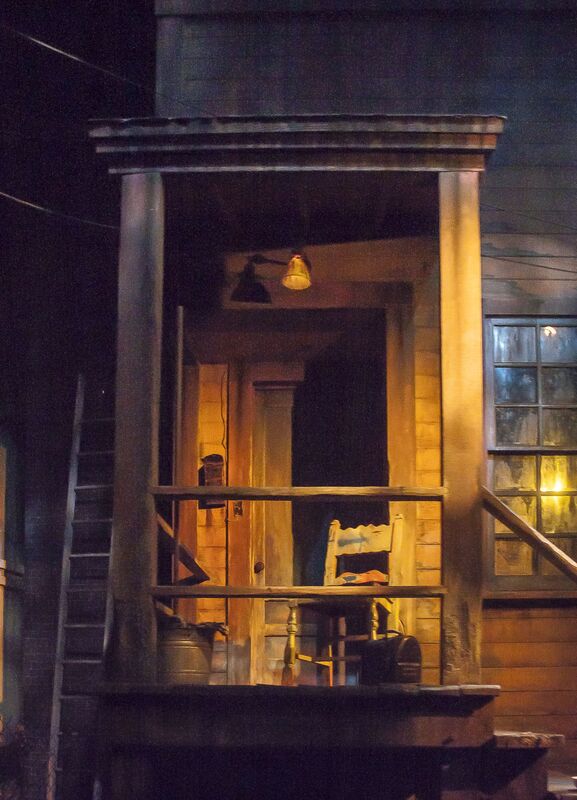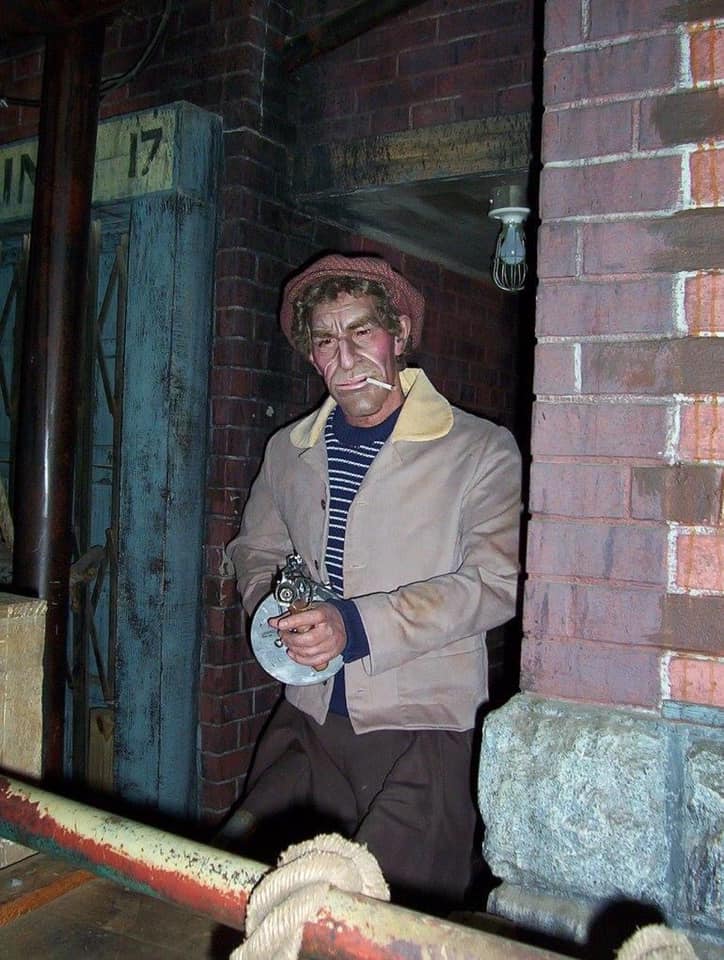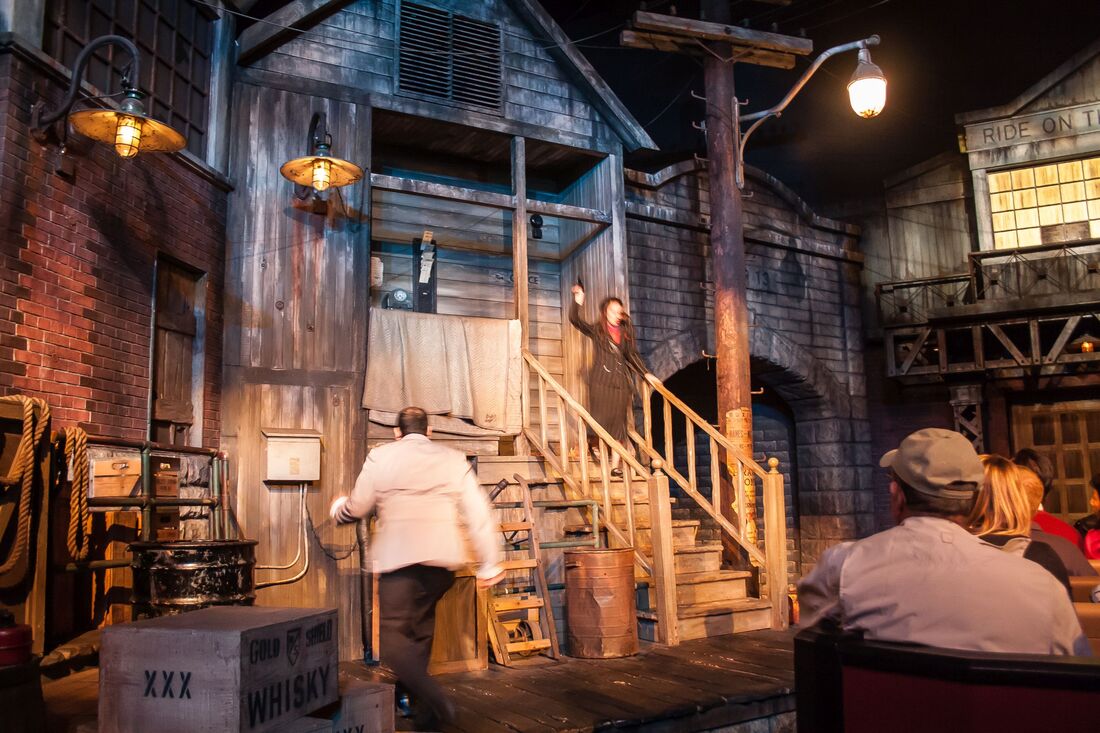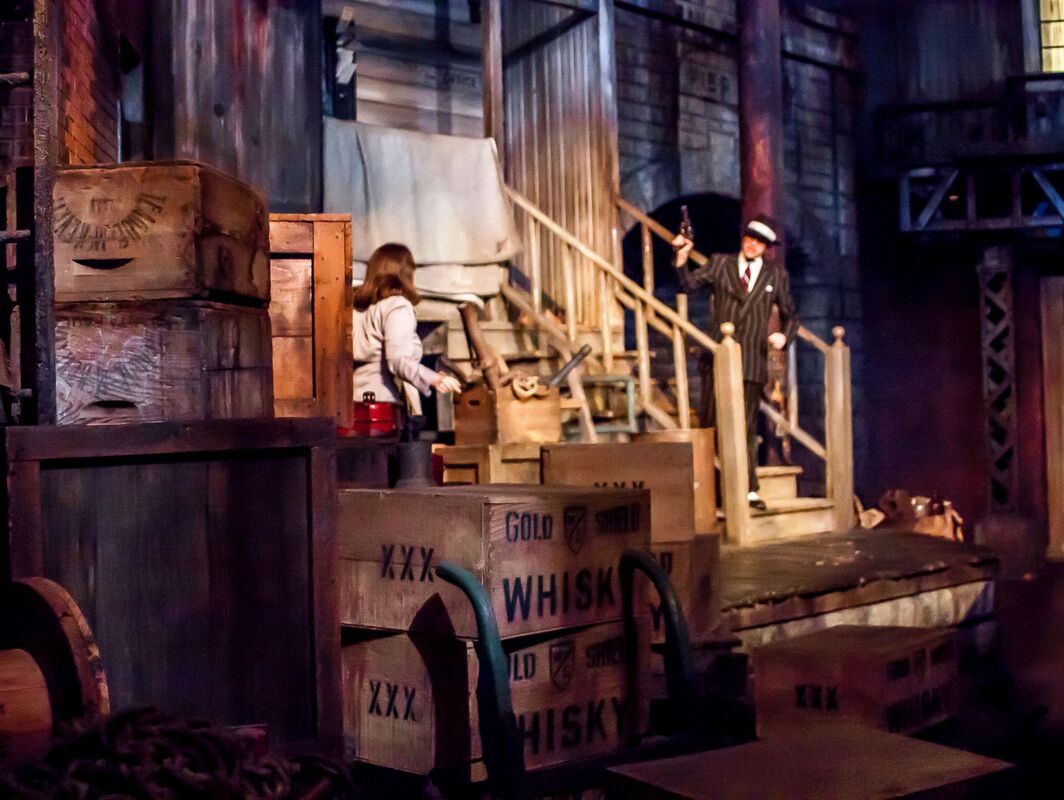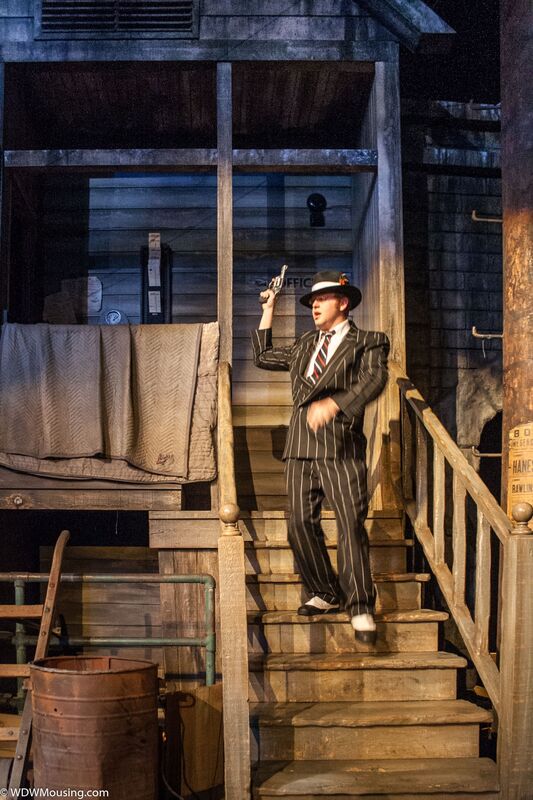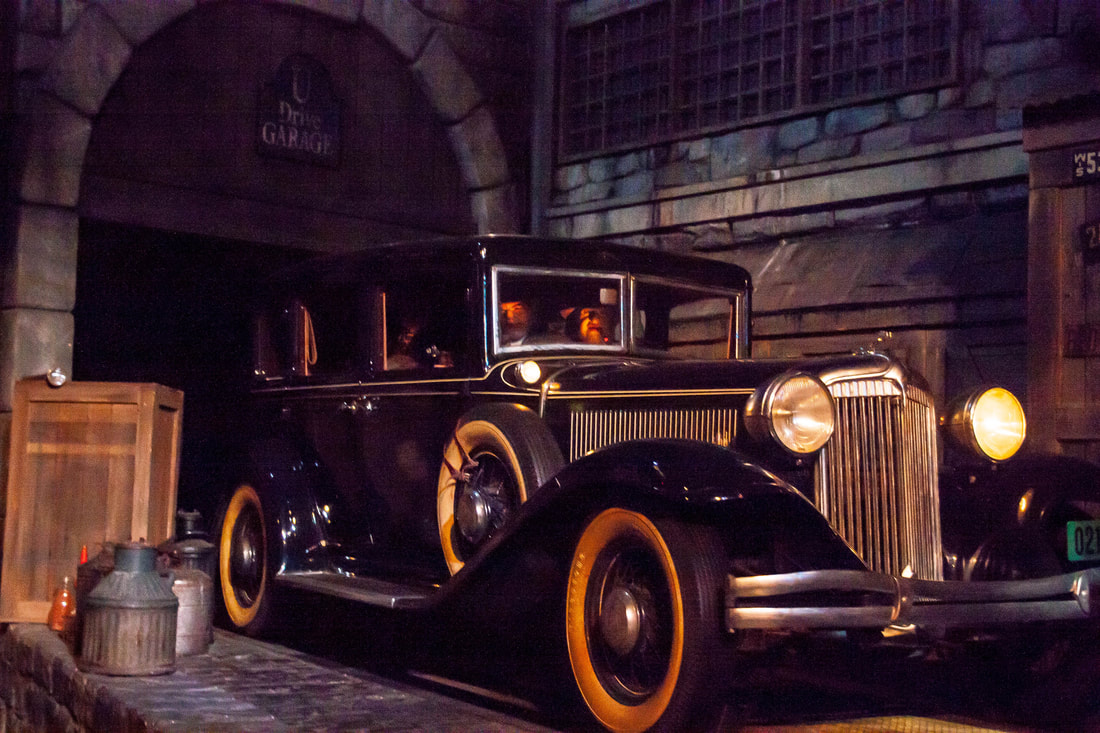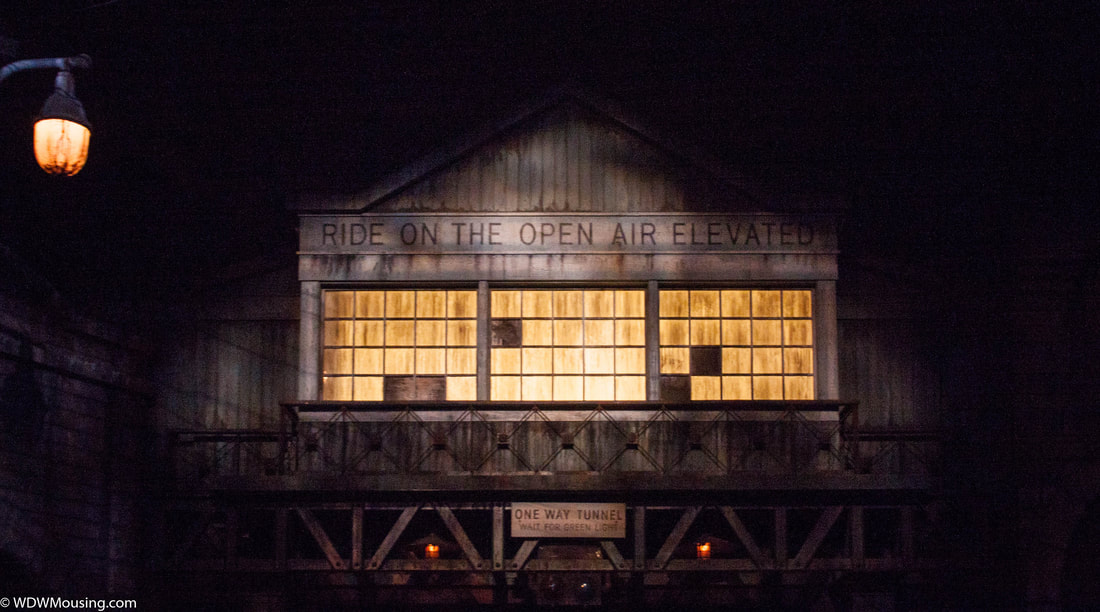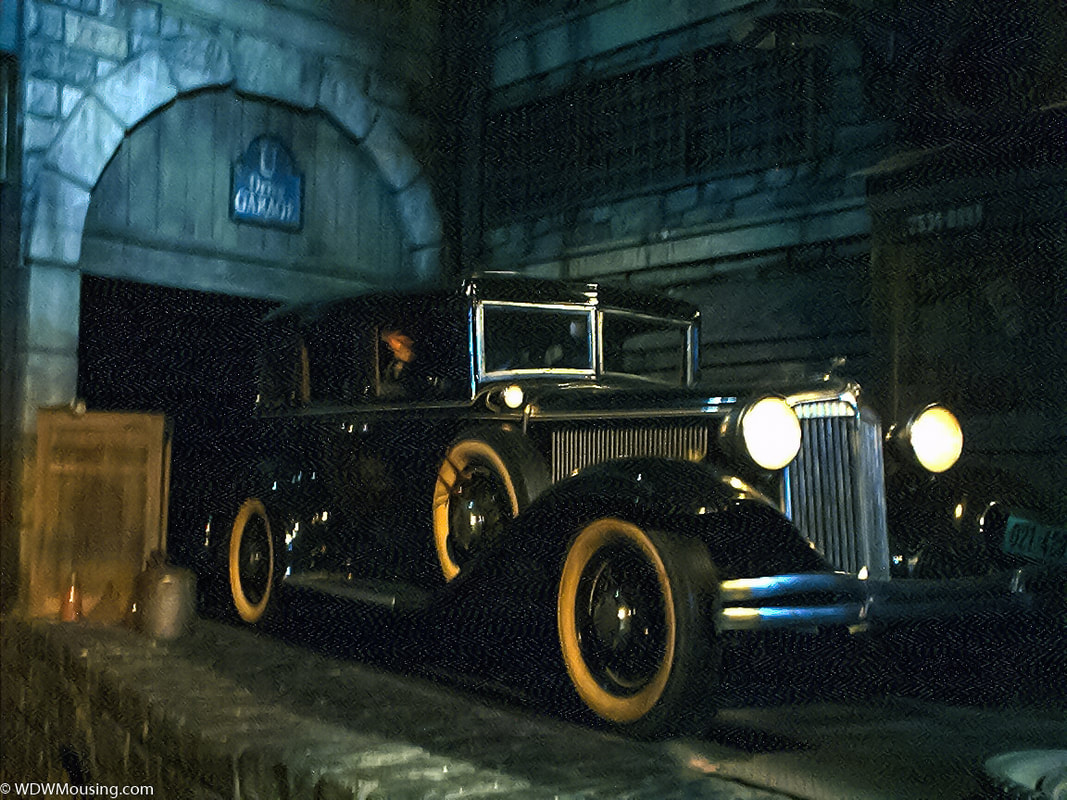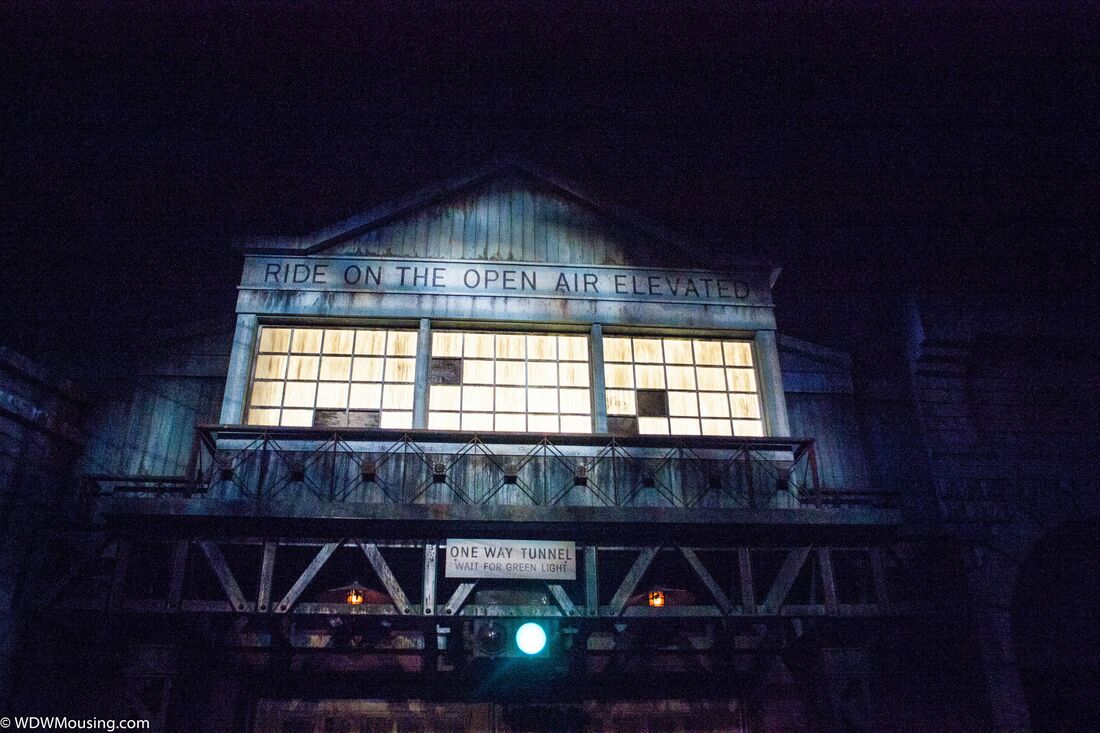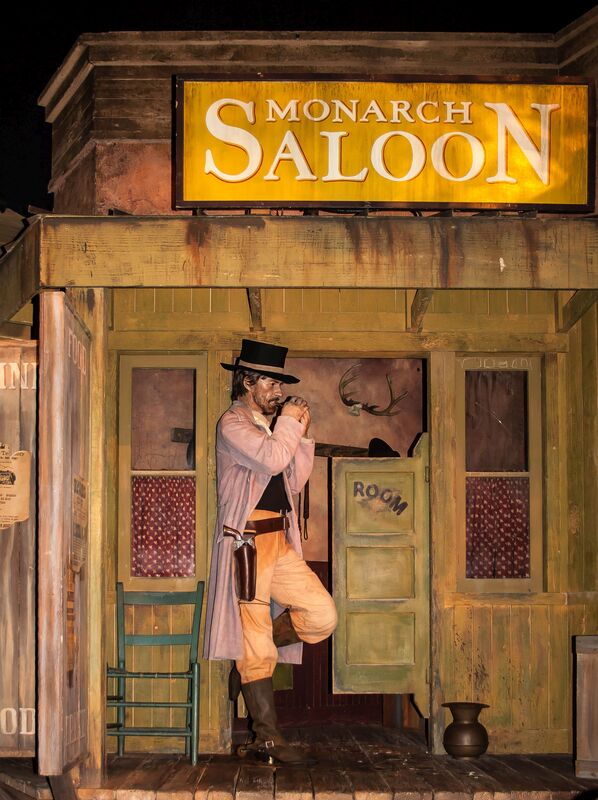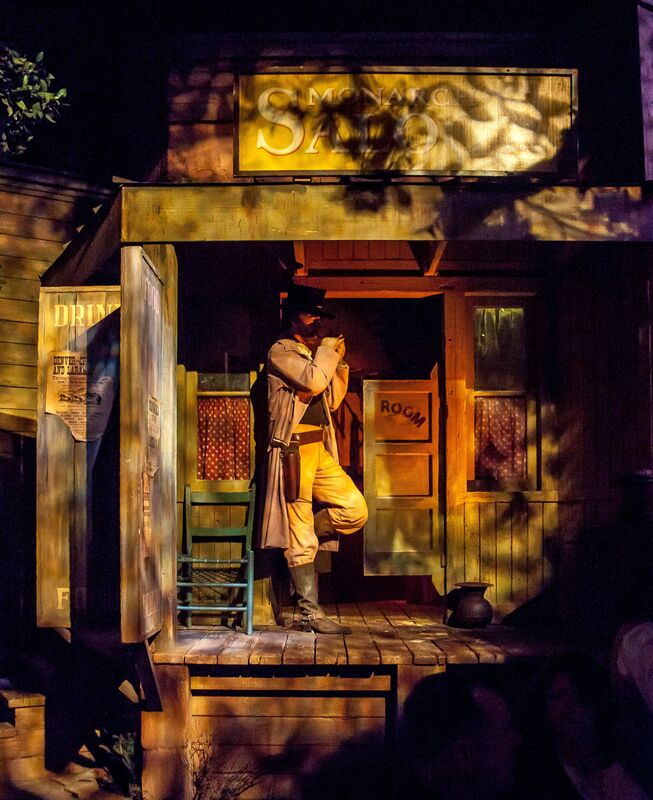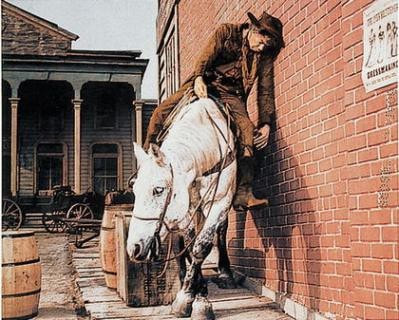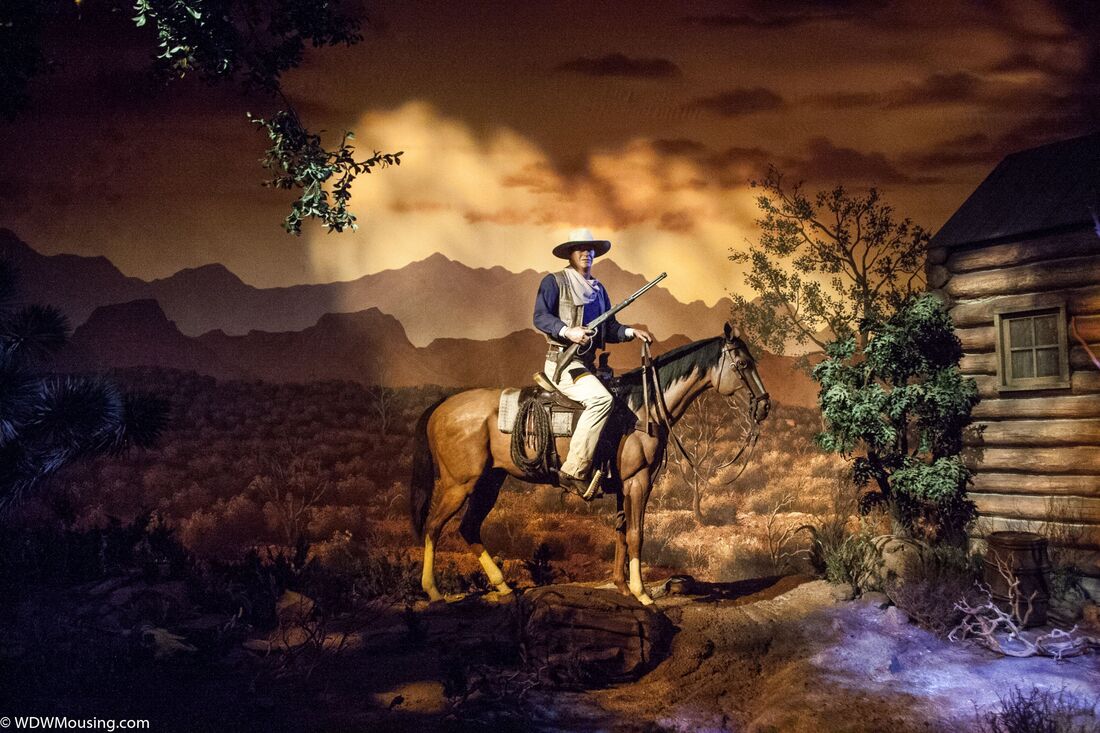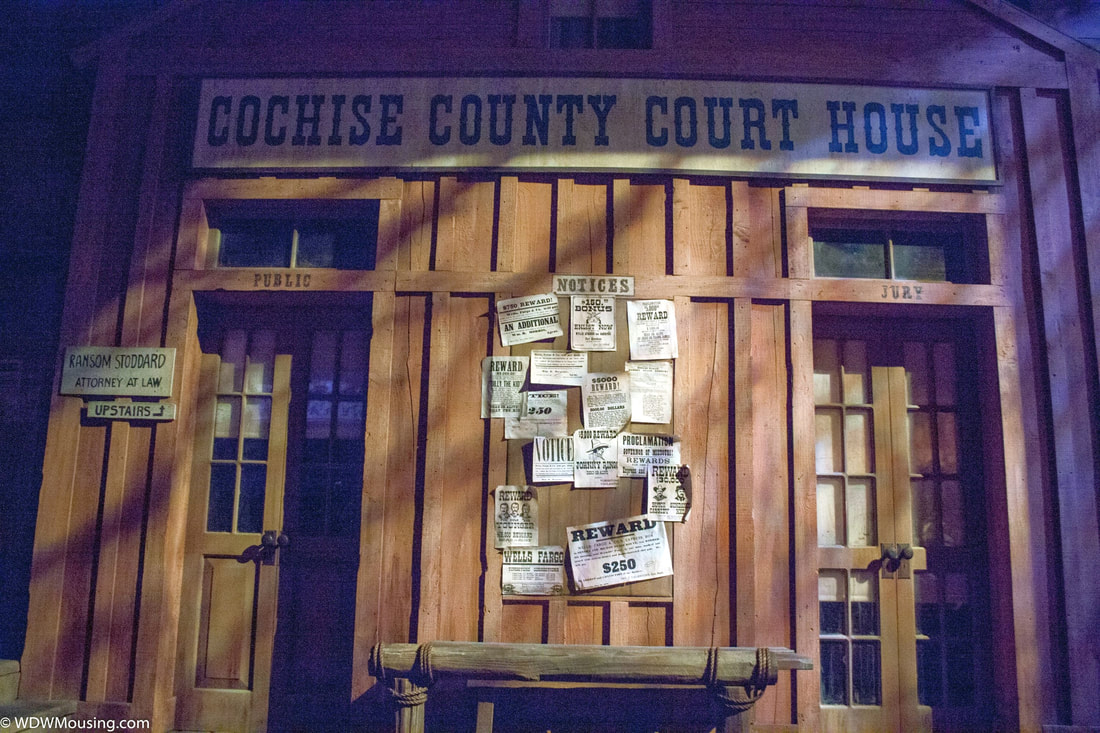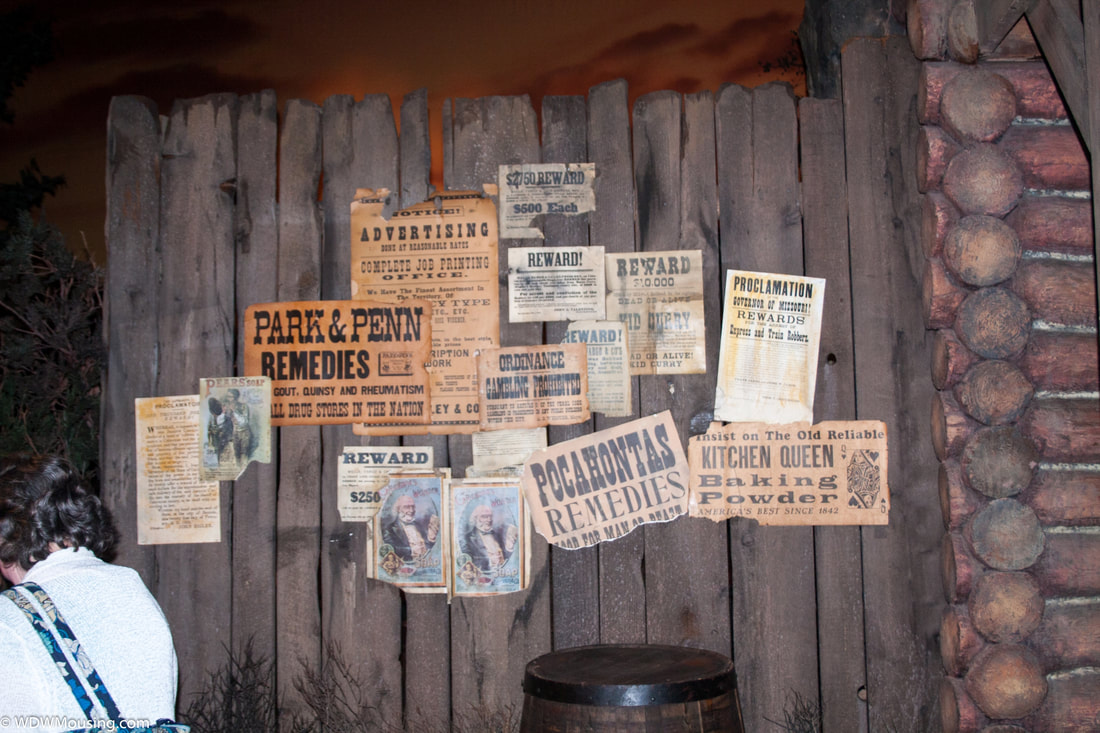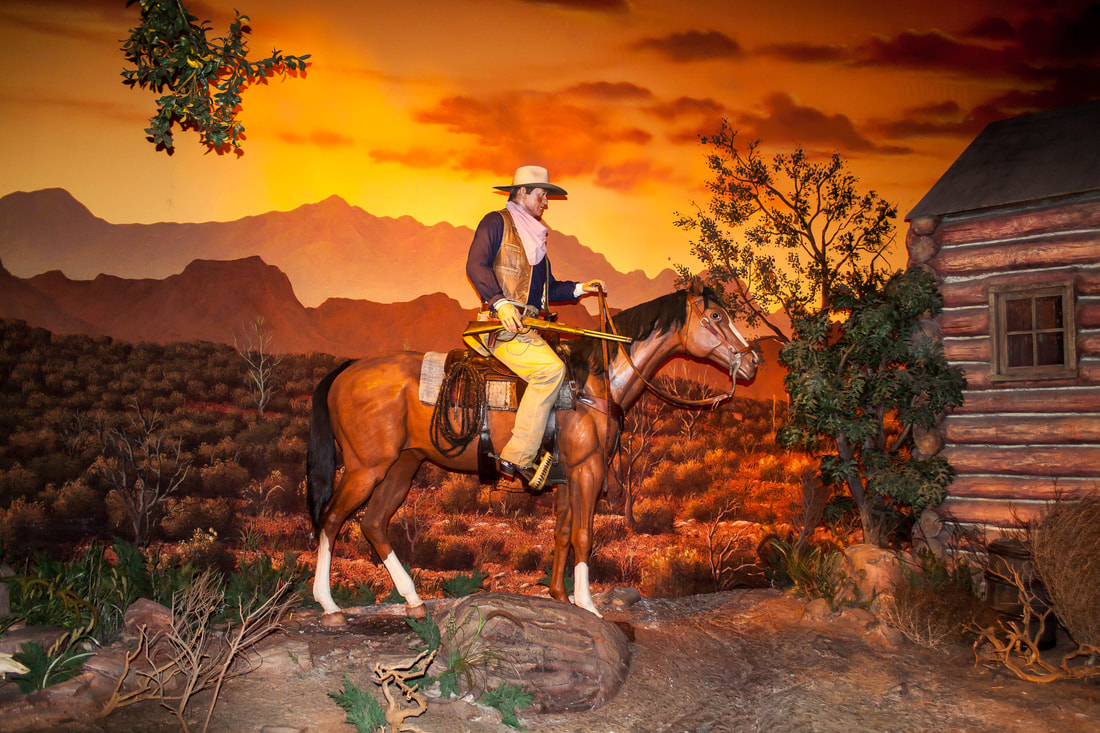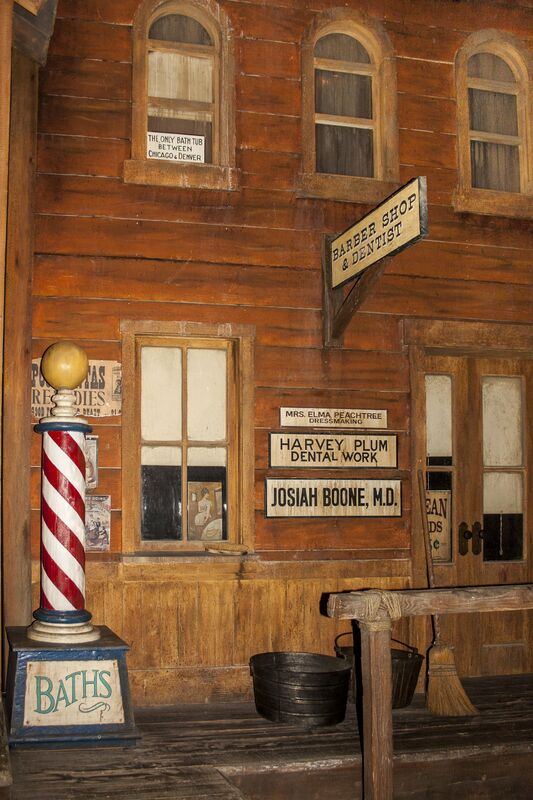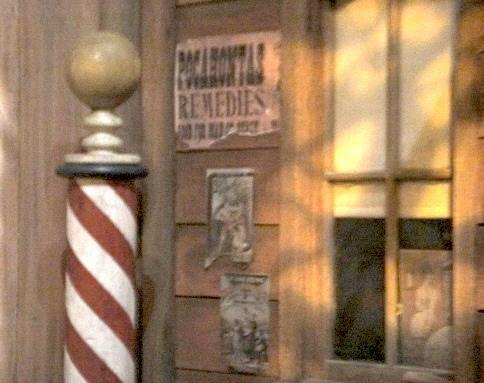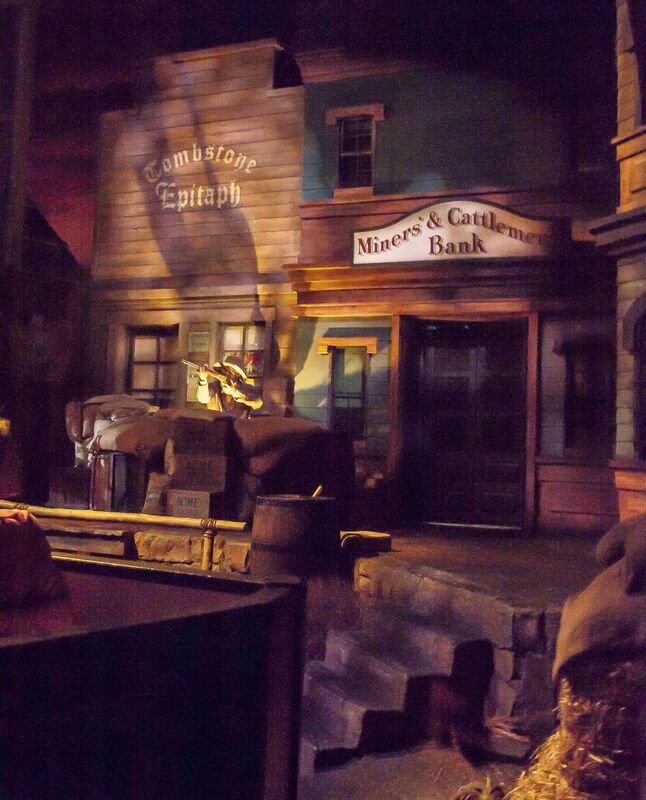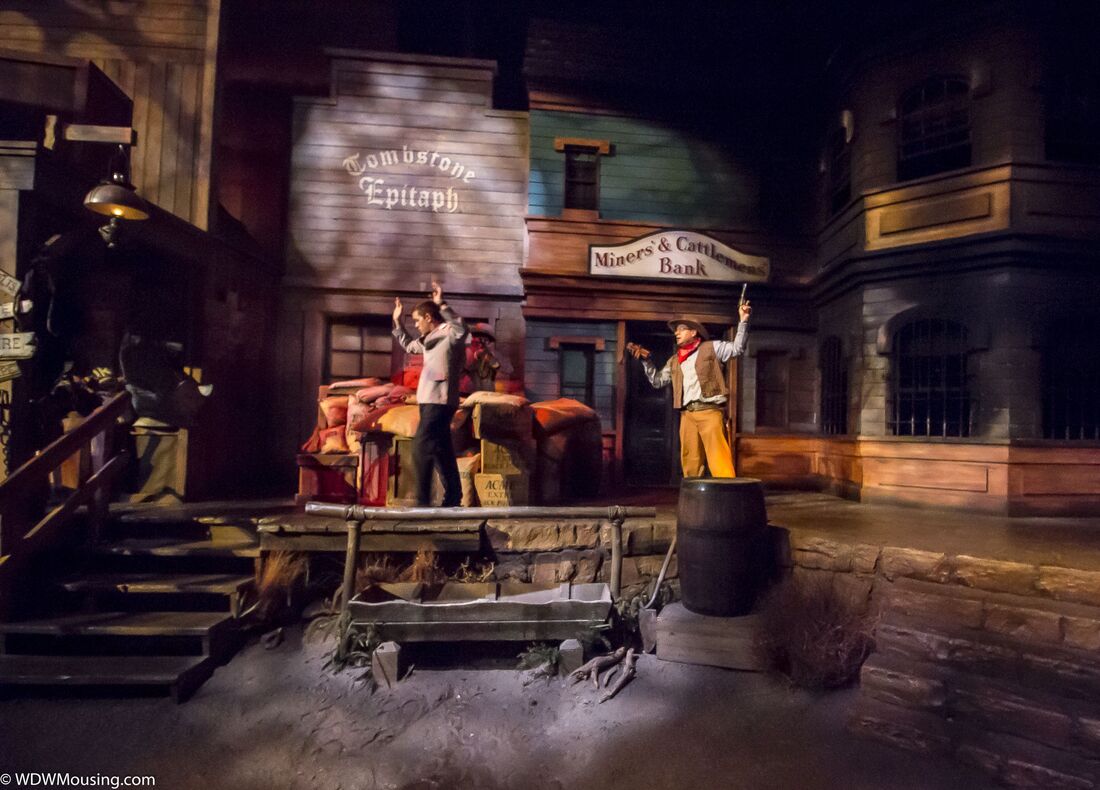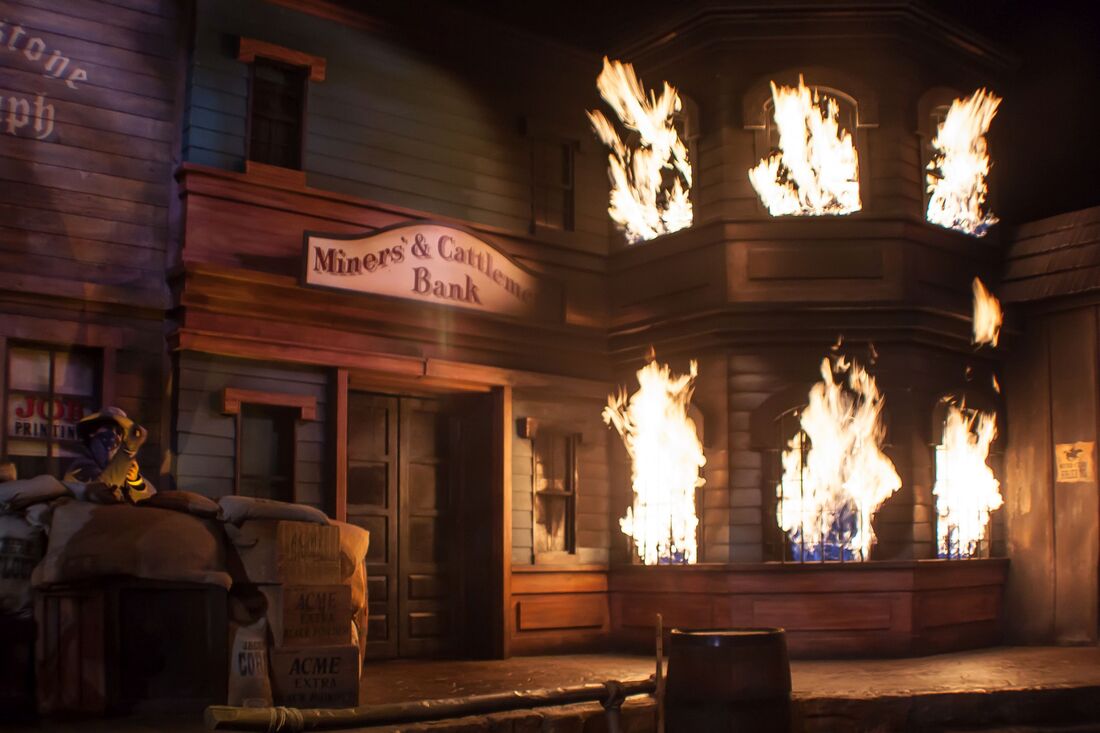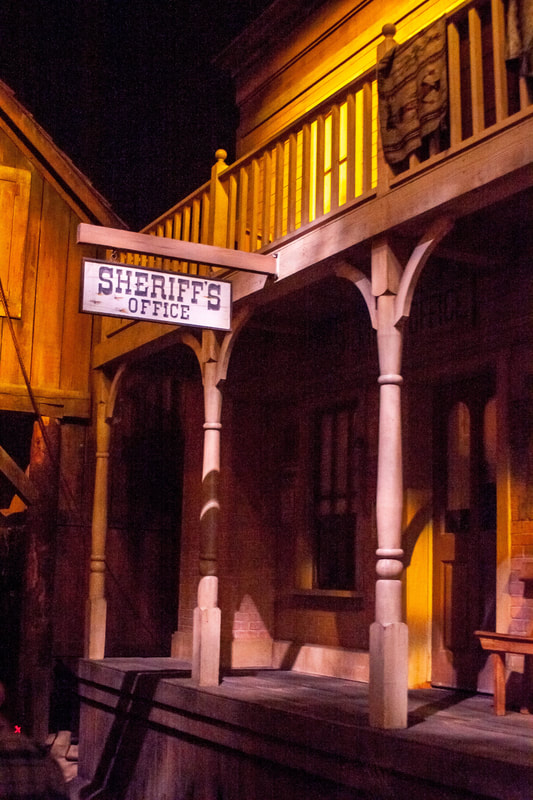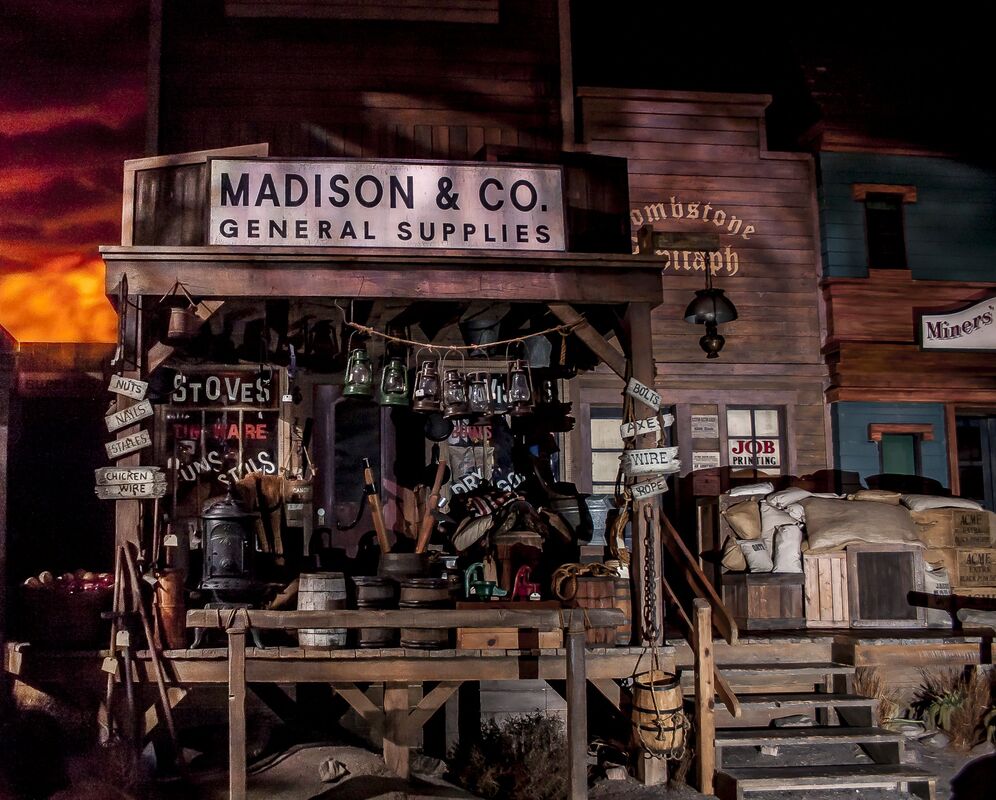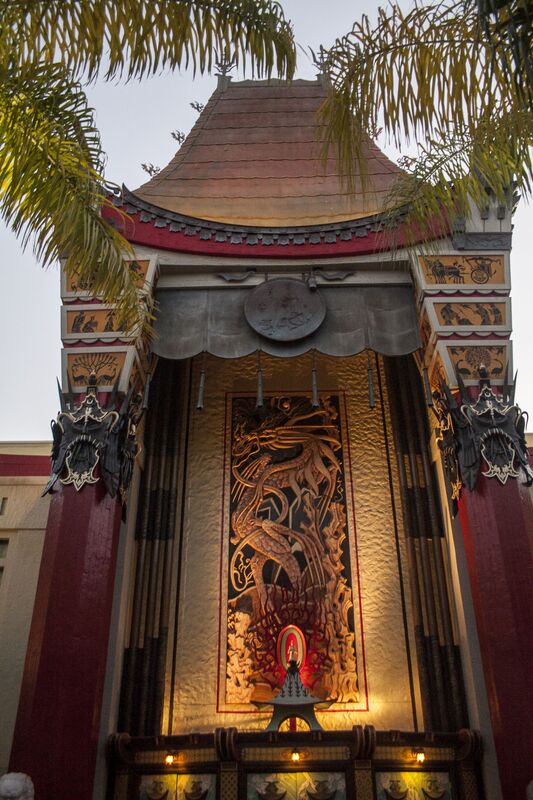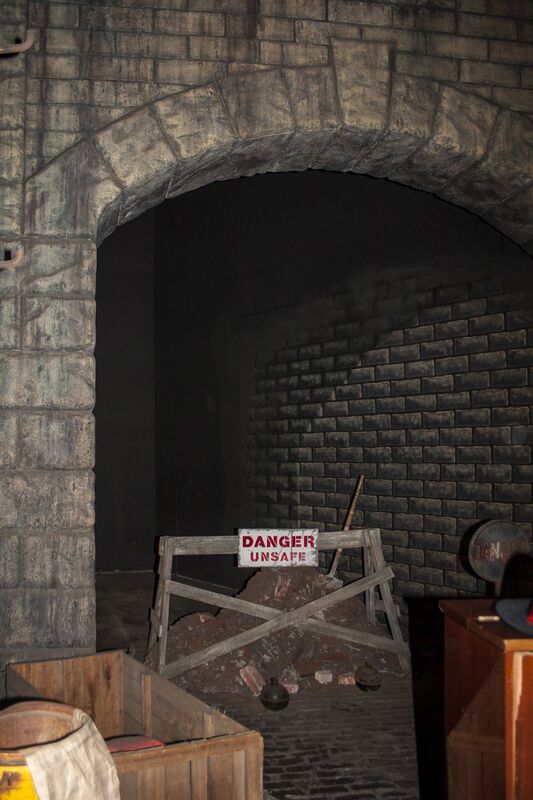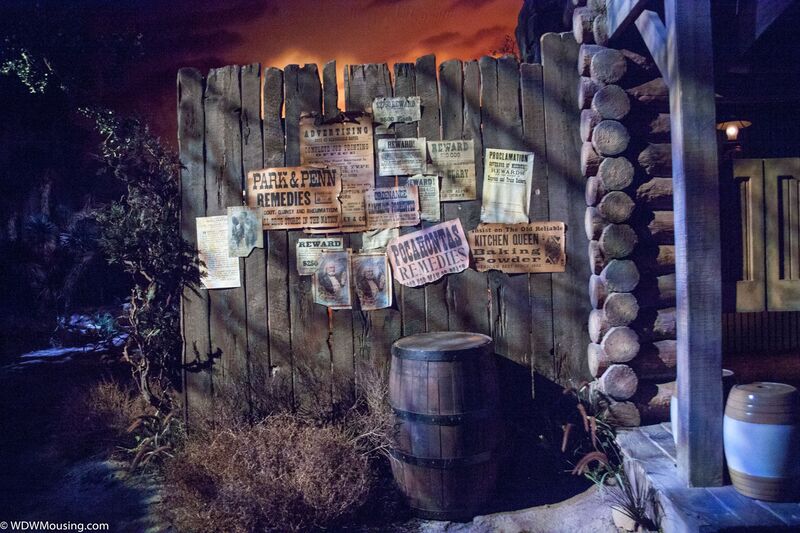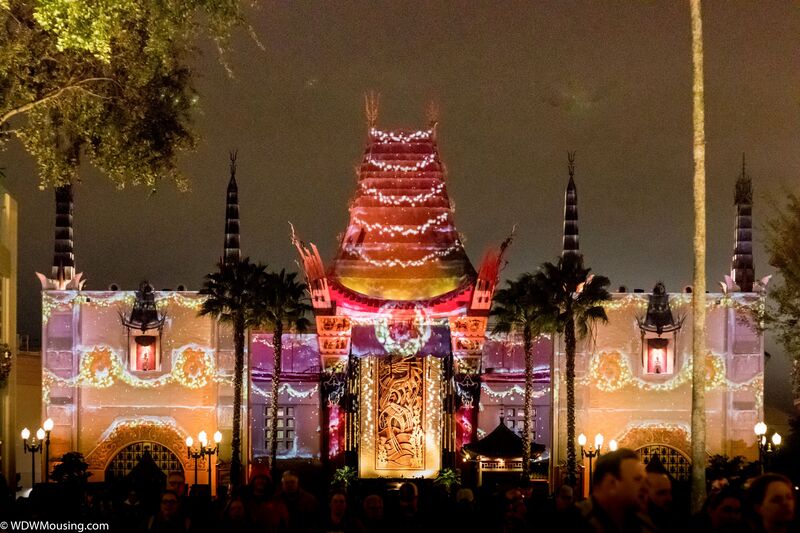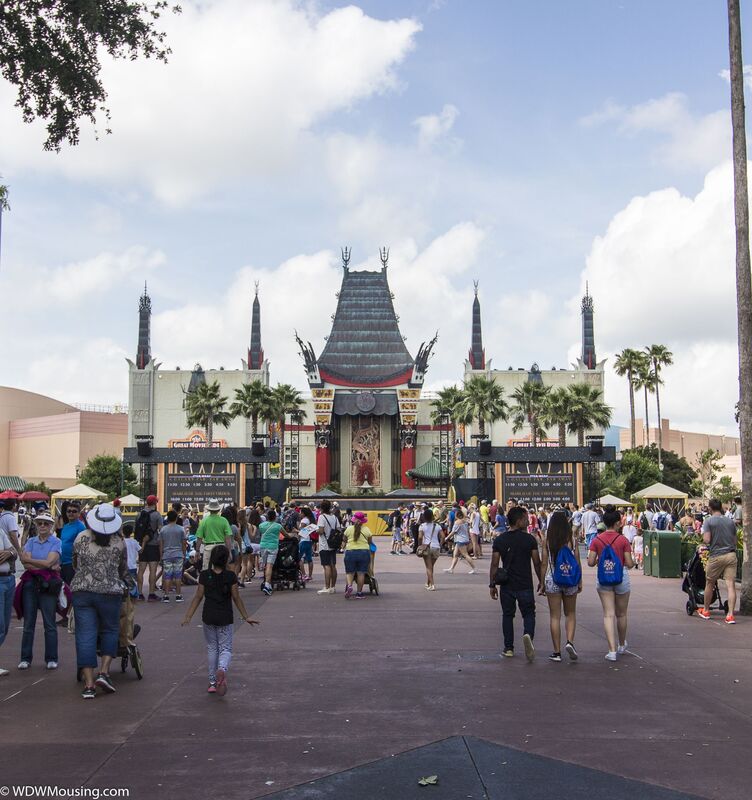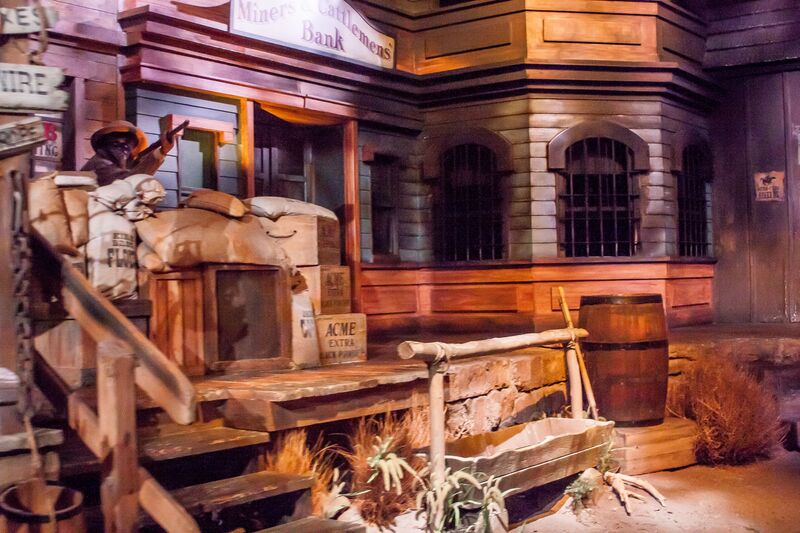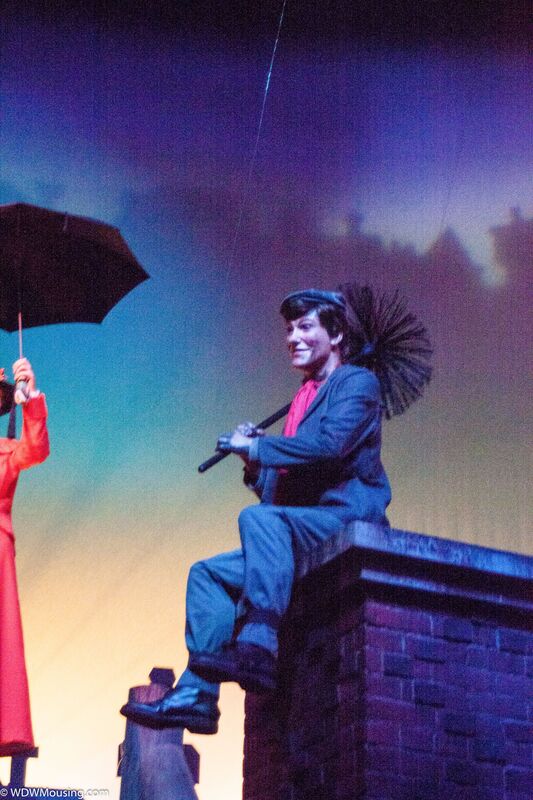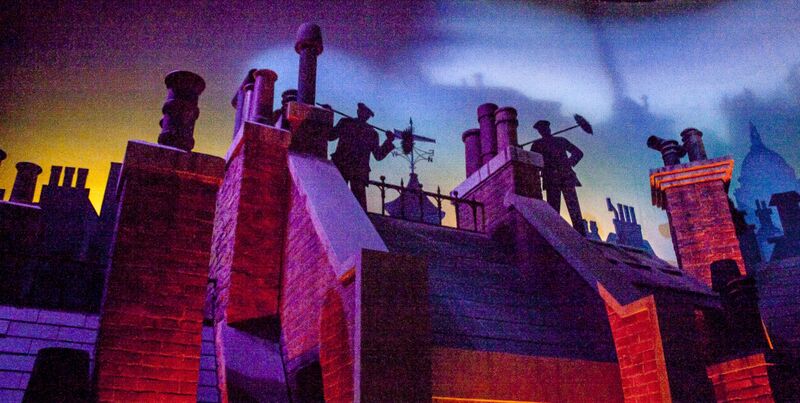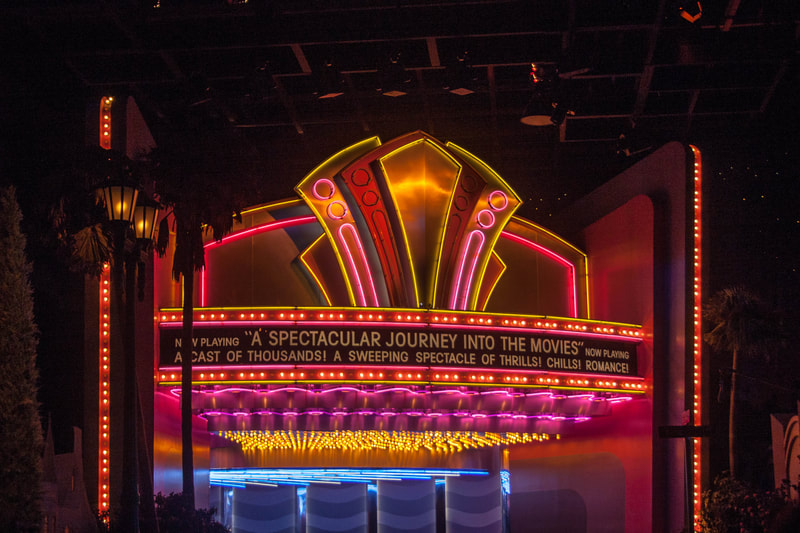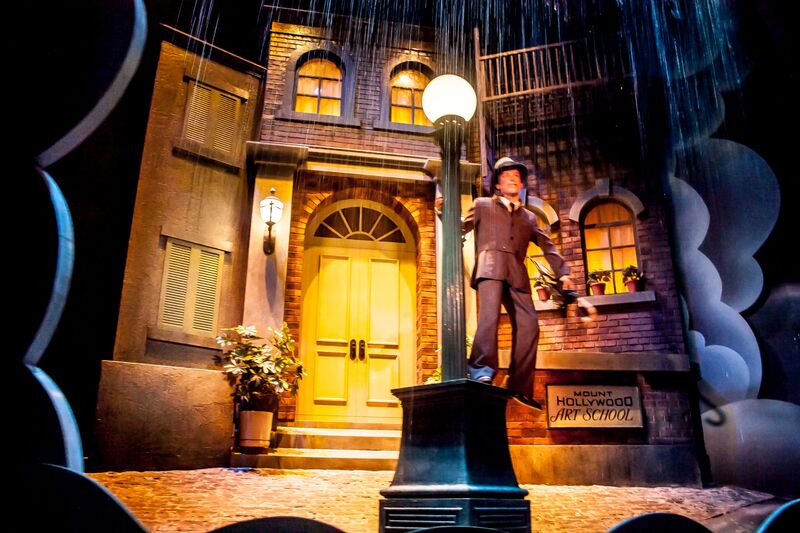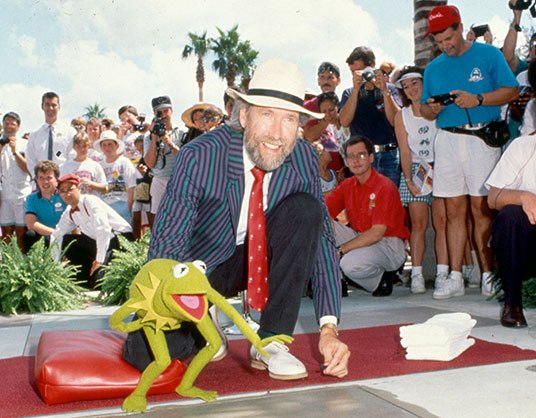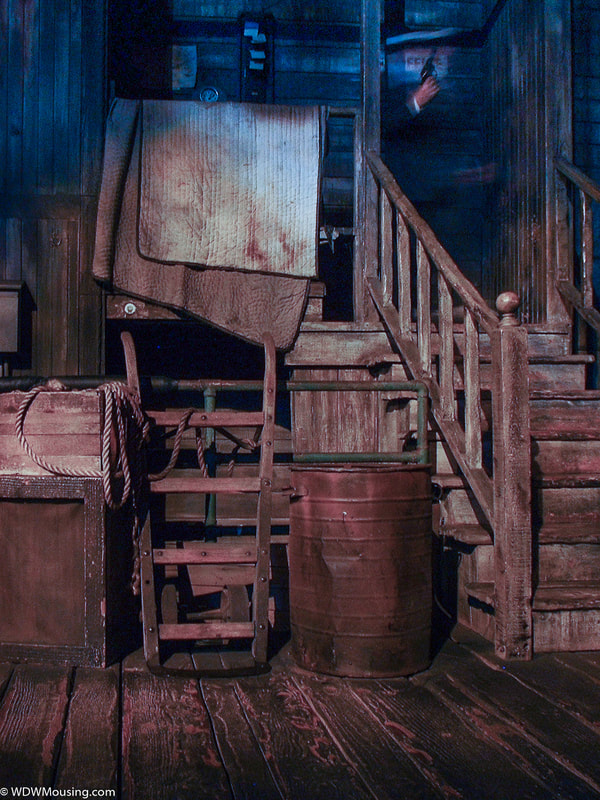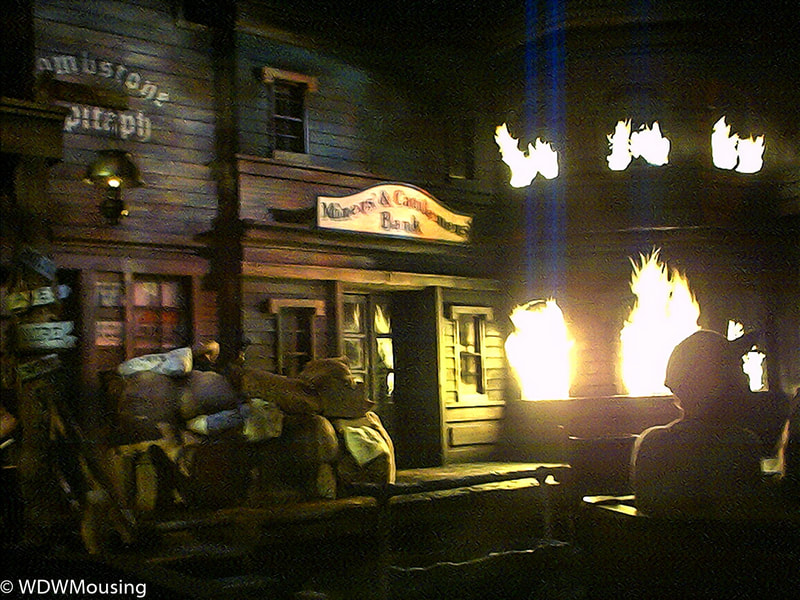Chapter 5 - Hollywood Studios - Great Movie Ride - Part 1
updated Feb 2022
On Opening Day, May 1, 1989, there were 2 major attractions in Hollywood Studios:
Indiana Jones Epic Stunt Spectacular! didn’t open until August 1989 and Star Tours: The Adventures Continue opened in December 1989. We’ll visit the Studio Backlot Tour in a later Chapter, but right now we’ll venture into the Grauman’s Theater at the Hollywood Boulevard and see what has been there and what’s there now.
- Studio Backlot Tour
- The Great Movie Ride
Indiana Jones Epic Stunt Spectacular! didn’t open until August 1989 and Star Tours: The Adventures Continue opened in December 1989. We’ll visit the Studio Backlot Tour in a later Chapter, but right now we’ll venture into the Grauman’s Theater at the Hollywood Boulevard and see what has been there and what’s there now.
Icon
All of the Walt Disney World Parks have Icons that keep you engaged, and would draw guests further into the Parks. Spaceship Earth at Epcot, Cinderella’s Castle in the Magic Kingdom and the Tree of Life in Animal Kingdom are attracting Icons for these Parks. Disney’s Hollywood Studios was also built with an enticing Icon, Grauman’s Chinese Theater at the head of Hollywood Boulevard. The Chinese theater was the attraction meant to draw you further into the park when the Studios first opened in 1989.
All of the Walt Disney World Parks have Icons that keep you engaged, and would draw guests further into the Parks. Spaceship Earth at Epcot, Cinderella’s Castle in the Magic Kingdom and the Tree of Life in Animal Kingdom are attracting Icons for these Parks. Disney’s Hollywood Studios was also built with an enticing Icon, Grauman’s Chinese Theater at the head of Hollywood Boulevard. The Chinese theater was the attraction meant to draw you further into the park when the Studios first opened in 1989.
Imagineers used the legendary Grauman's Chinese Theater In order to achieve the illusion of the Golden Age of Hollywood.
The original Chinese Theatre is a real movie theater located in Hollywood at 6925 Hollywood Boulevard.
It opened May 18, 1927, with the premiere of The King of Kings, a movie directed by Cecil B. DeMille. The theater has been home to many premieres, including the 1977 launch of Star Wars, as well as, three Oscar ceremonies.
Since the original overall theme of Disney/MGM Studios was to be about classic movies, it was natural to choose Grauman’s Chinese Theater as the major attraction for showcasing those films.
When creating the replica of the Chinese Theater in Disney-MGM Studios, Imagineers used the original blueprints of the 1927 Meyer and Holler building for reference.
The original Chinese Theatre is a real movie theater located in Hollywood at 6925 Hollywood Boulevard.
It opened May 18, 1927, with the premiere of The King of Kings, a movie directed by Cecil B. DeMille. The theater has been home to many premieres, including the 1977 launch of Star Wars, as well as, three Oscar ceremonies.
Since the original overall theme of Disney/MGM Studios was to be about classic movies, it was natural to choose Grauman’s Chinese Theater as the major attraction for showcasing those films.
When creating the replica of the Chinese Theater in Disney-MGM Studios, Imagineers used the original blueprints of the 1927 Meyer and Holler building for reference.
click to enlarge
|
The 1939 Cadillac Fleetwood Series 60 in the Chinese Theater’s Courtyard was there to fit the era and theming of the theater as well as the Golden Age of Hollywood. The car was removed to avoid damage when the area became a fallout zone for fireworks.
Note: Information on the Car came from Emily Schonaerts and Tyler Garland on Facebook |
Courtyard
Since the Chinese Theater is an exact replica of the original, the Courtyard should also achieve the illusion of the Golden Age of Hollywood by featuring the handprints, footprints, and signatures of dozens of Hollywood icons and Disney characters.
Most guests miss out on the courtyard located in front of the building.
Since the Chinese Theater is an exact replica of the original, the Courtyard should also achieve the illusion of the Golden Age of Hollywood by featuring the handprints, footprints, and signatures of dozens of Hollywood icons and Disney characters.
Most guests miss out on the courtyard located in front of the building.
From 1989-1995, many stars were happy to add themselves to the concrete in the forecourt of the attraction. On the park’s opening day, Mickey Mouse, Donald Duck, Minnie Mouse, Goofy, Roger Rabbit, and other Disney characters were immortalized in the pavement.
From 1989 – 1992, each week, two different celebrities were scheduled for specific appearances in the park. Initially, this consisted of a 1pm “Star Today - Star Conversation” program at the Theater of the Stars, followed by a ride down Hollywood Boulevard in an open convertible at 2pm, and a public Handprint Ceremony in front of the Chinese Theatre. (For more see Chapter 2 – Hollywood Boulevard – Part 2)
Other well-known stars were added through the years:
Bob Hope; Dick Van Dyke; Jim Henson (and Kermit!); Betty White; John Travolta; Sylvester Stallone; Annette Funicello; Harrison Ford; Mark Hamill; George Lucas (as well as CPO and R2D2); Robin Williams and many, many more.
From 1989 – 1992, each week, two different celebrities were scheduled for specific appearances in the park. Initially, this consisted of a 1pm “Star Today - Star Conversation” program at the Theater of the Stars, followed by a ride down Hollywood Boulevard in an open convertible at 2pm, and a public Handprint Ceremony in front of the Chinese Theatre. (For more see Chapter 2 – Hollywood Boulevard – Part 2)
Other well-known stars were added through the years:
Bob Hope; Dick Van Dyke; Jim Henson (and Kermit!); Betty White; John Travolta; Sylvester Stallone; Annette Funicello; Harrison Ford; Mark Hamill; George Lucas (as well as CPO and R2D2); Robin Williams and many, many more.
click to enlarge
|
Traditionally, celebrities wrote the date they made their impression in cement; however, John Ritter accidentally wrote his birthday instead. Source: Richard Miller from Facebook |
Note: For a list of handprints and footprints in the Chinese Theatre's courtyard:
|
Queue
The entrance to the Theater starts on the right side. The pathway under the Chinese awning, which was for Stand-by Guests, leaded to the Grand Lobby. |
Just a little Queue Music to get you in the Mood.
|
When guests walked into The Chinese Theater they were walking into history. The history of great movies.
Lobby
The lobby also featured digital posters of various motion pictures. The Lobby has the grandeur of the Theaters from the Golden Age of Hollywood.
The lobby also featured digital posters of various motion pictures. The Lobby has the grandeur of the Theaters from the Golden Age of Hollywood.
As guests walk through the lovely lobby that features a panel-mural, vase, and intricate carpeting. All of the carpeting in the queue was custom made by a Japanese firm.
|
Props that were displayed in the Lobby area over the years:
|
- Spacesuit and various props from the films Alien and Armageddon
- Sam's piano from Casablanca
- A dress worn by Julie Andrews in The Sound of Music
- The title object from Cocoon
- The model Nautilus submarine and a dive suit from Disney's 20,000 Leagues Under the Sea
- A suit from Guys and Dolls
- Liza Minnelli's kimono from Cabaret
- Alex's bowler hat from A Clockwork Orange
- Iceman's uniform from Top Gun
- A costume from Beverly Hills Cop II
Pre-Show Theater
From the Lobby the queue line took guests into the pre-show theatre. The theater is a scaled down decor of the original Grauman’s Theater, without the seats. Guests would zig-zag down the Theater, while being entertained by several short movie clips.
From the Lobby the queue line took guests into the pre-show theatre. The theater is a scaled down decor of the original Grauman’s Theater, without the seats. Guests would zig-zag down the Theater, while being entertained by several short movie clips.
|
Here is the complete list of the Pre-show Theater movie trailer clips (1989 - 2015):
|
|
|
In November 2014, Disney and Turner Classic Movies announced that TCM would become the new sponsor of The Great Movie Ride. As part of the agreement in May 2015 the attraction’s preshow and closing montage were updated. TCM host Robert Osborne introduced the film clips in both the preshow and the closing montage.
TCM host Robert Osborne now also provided narration with insight and commentary about various motion pictures and film genres throughout the entire attraction. |
|
These were the 2015 TCM The Great Movie Ride PreShow Film Clips:
|
|
In 2015, changes could be noted in the Lobby with the new illuminated movie posters that are high resolution digital screens. The posters changed from one to another, and feature some simple animation.
Following these changes, the live cast member is still featured in the interactive parts of the ride; however Robert Osborne is the one who narrates The Great Movie Ride’s scenes.
History of the Great Movie Ride
In early 1980’s, Imagineers led by Marty Skylar and Randy Bright were given the task of creating two new pavilions for Future World in EPCOT Center. One idea they came up with, was to be the Great Moments in Movies pavilion, which would house an attraction which would have taken guests through various iconic movie scenes (a concept that would eventually materialize in The Great Movie Ride).
Michael Eisner, then the CEO of the Disney Company, decided that the idea for the pavilion was strong enough to warrant its own theme park and he told his Imagineers to begin working on it.
The Great Moments in the Movies attraction was considered as the new park’s centerpiece.
Since the attraction was going to be the focus of the new park, Disney Imagineers decided that they needed to create a new façade for the attraction. Because the Disney MGM Studios were set in the golden age of Hollywood (the 1920s-1930s), Imagineers decided to house the attraction inside one of Hollywood’s landmarks, Grauman’s Chinese Theater.
The Great Movie Ride’s plot would focus on taking guests on a journey through various classic films. Posters of the films selected for the Great Movie Ride.
In early 1980’s, Imagineers led by Marty Skylar and Randy Bright were given the task of creating two new pavilions for Future World in EPCOT Center. One idea they came up with, was to be the Great Moments in Movies pavilion, which would house an attraction which would have taken guests through various iconic movie scenes (a concept that would eventually materialize in The Great Movie Ride).
Michael Eisner, then the CEO of the Disney Company, decided that the idea for the pavilion was strong enough to warrant its own theme park and he told his Imagineers to begin working on it.
The Great Moments in the Movies attraction was considered as the new park’s centerpiece.
Since the attraction was going to be the focus of the new park, Disney Imagineers decided that they needed to create a new façade for the attraction. Because the Disney MGM Studios were set in the golden age of Hollywood (the 1920s-1930s), Imagineers decided to house the attraction inside one of Hollywood’s landmarks, Grauman’s Chinese Theater.
The Great Movie Ride’s plot would focus on taking guests on a journey through various classic films. Posters of the films selected for the Great Movie Ride.
Construction on The Great Movie Ride began in 1986 and Coca Cola was the sponsor of the Great Movie Ride.
Since its opening, The Great Movie Ride has only seen a few major changes:
Since its opening, The Great Movie Ride has only seen a few major changes:
- The first change to the attraction was the Footlight Parade scene. It originally featured a rotating cake and attached water pumps. The cake in the scene was constantly breaking down and the water pumps would fail, causing the ride path to flood. Disney Imagineers eventually decided to leave the cake stationary, and use lighting effects instead of water pumps. More recently, bubbles have descended on guests in this scene.
- The next change came in 1998, when Coca Cola ended its sponsorship of the attraction.
- In 2001, the theater's spires were removed. This was done at the time that the large Sorcerer's Hat was constructed in front of the theater.
- In 2008, the Wicked Witch of the West Audio Animatronic was replaced with a newer model.
- In 2014, Disney and Turner Classic Movies announced that TCM would become the new sponsor of The Great Movie Ride.
- In 2017, the Great Movie Ride was closed to make way for a new Mickey Mouse attraction titled "Mickey and Minnie’s Runaway Railway"
And now on to the movies!
Note: None of the photos in the Great Movie Ride were taken with a flash. Several were taken during a Tables in Wonderland Dinner within the Ride and the lights in many areas were on. More about the Dinner later in the next chapter.
Note: None of the photos in the Great Movie Ride were taken with a flash. Several were taken during a Tables in Wonderland Dinner within the Ride and the lights in many areas were on. More about the Dinner later in the next chapter.
Traveling Theater Car
The queue line ends at a pair of doors at the front of the theatre, which lead into a 1930’s themed Hollywood soundstage with a backdrop of the Hollywood Hills. Here the guests were loaded onto waiting tour vehicles.
The queue line ends at a pair of doors at the front of the theatre, which lead into a 1930’s themed Hollywood soundstage with a backdrop of the Hollywood Hills. Here the guests were loaded onto waiting tour vehicles.
Ahead was a 1930’s era neon theater marquee.
|
After the guests had boarded their ride vehicles, the tour begins with an introduction to their tour guide. After everybody is ready, the guide told the guests that its show time, then shouts to C.B. (famous Hollywood director Cécile B. Demile) that everyone is ready to go.
C.B. yells “Action!” and the vehicle began to move, with the song “Hooray for Hollywood” playing in the background. After TCM became the sponsor, the tour guide would introduce his co-narrator for the attraction, Turner Classic Movie’s host Robert Osborne. As guests enter the attraction’s first scene Osborne says: "Thank you, and hooray for Hollywood indeed. What better way to start our journey? From the old west to the rooftops of London, and along the Yellow Brick Road, there really is no place like the movies". Note: There is a further discussion about the Travel Vehicle in a section below. |
The vehicle then enters the first scene.
|
This scene is a salute to Busby Berkley’s 1933 Footlight Parade.
The scene was originally painted in the art-deco style used in the film, with swimmers placed along the hallway on diving boards, music from the film playing, and bubbles falling from the ceiling onto guests. The cake, on which the remaining swimmers were perched, rotated and used water effects to set the scene. |
Due to constant mechanical issues the effects were eventually turned off. The hallway was modified to be much darker, the swimmers moved to behind the cake and eventually replaced with decorative sconces. A large piece of gauze cloth that appears opaque until lit from behind, was placed in front of the cake onto which projection lighting effects were shown.
Guests pass by a pyramid of chorus girls as bubbles float down from above. Footlight Parade starred, James Cagney, Joan Blondell, Ruby Keeler, and Dick Powell. One of Hollywood's significant contributions to the world of film were musicals. Footlight Parade is considered one of the best from the era. The film’s storyline is that of musical stage producer, Chester Kent, who is busy trying acclimate him and his industry to "talkies" and the film focuses on Kent and his rival producer competing against each other. The scene in the Great Movie Ride from Footlight Parade is from the “By A Waterfall” sequence. It’s one of the popular scenes from the 1933 Busby Berkeley spectacular Sources |
Singin’ in the Rain
To the left guests get a glimpse of Gene Kelly in Singin’ in the Rain.
Singin' in the Rain is a 1952 American musical romantic comedy film directed and choreographed by Gene Kelly and Stanley Donen, starring Kelly, Donald O'Connor, and Debbie Reynolds. It offers a lighthearted depiction of Hollywood in the late 1920s, with the three stars portraying performers caught up in the transition from silent films to "talkies".
To the left guests get a glimpse of Gene Kelly in Singin’ in the Rain.
Singin' in the Rain is a 1952 American musical romantic comedy film directed and choreographed by Gene Kelly and Stanley Donen, starring Kelly, Donald O'Connor, and Debbie Reynolds. It offers a lighthearted depiction of Hollywood in the late 1920s, with the three stars portraying performers caught up in the transition from silent films to "talkies".
|
It was bestowed legendary status by contemporary critics, and is regarded as the best film musical ever made. The film is placed 10th on the American Film Institute list of 100 great films, and was voted the fourth greatest film of all time in the Sight & Sound poll.
|
Reference:
Mary Poppins
The Travel Vehicle moves on to the scene with Julie Andrews and Dick Van Dyke from Mary Poppins.
The Travel Vehicle moves on to the scene with Julie Andrews and Dick Van Dyke from Mary Poppins.
|
Mary Poppins appeared as an audio-animatronic figure in The Great Movie Ride with Bert in the roof top scene from the movie based on the song "Chim Chim Cher-ee". The song was written by the Sherman Brothers, who also won an Oscar and a Grammy Award for the film's song score.
Video from the Scene: |
Note: There were two variations of The Great Movie Ride, known as “A” and “B.” The “A” version features a couple acted out scenes with a western theme, while the “B” version features a gangster theme.
When The Great Movie Ride opened, only men played gangsters and women played bandits.
When The Great Movie Ride opened, only men played gangsters and women played bandits.
The Public Enemy
The next scene was a tribute to gangster films. As the ride vehicles enter the underworld, Robert Osborne observes:
"Here's the birthplace of the gangster film, the seedy underbelly of Chicago from The Public Enemy starring James Cagney. Released in 1931 before strict censorship rules were enforced, The Public Enemy is a gritty, realistic, and violent look at the world of gangsters of the Depression Era."
The next scene was a tribute to gangster films. As the ride vehicles enter the underworld, Robert Osborne observes:
"Here's the birthplace of the gangster film, the seedy underbelly of Chicago from The Public Enemy starring James Cagney. Released in 1931 before strict censorship rules were enforced, The Public Enemy is a gritty, realistic, and violent look at the world of gangsters of the Depression Era."
As the ride continues, the tour guide warns guests that they better hold onto their purses and wallets, as they are entering a bad neighborhood. As the cars enter a dirty alley, guests can see a fight going on in an apartment.
In the gangster scene, guests can see that a Mickey Mouse movie poster has been covered by a poster advertising the Jimmy Cagney movie Public Enemy. (see poster below)
Source: Richard Miller from Facebook
In the gangster scene, guests can see that a Mickey Mouse movie poster has been covered by a poster advertising the Jimmy Cagney movie Public Enemy. (see poster below)
Source: Richard Miller from Facebook
|
On the left was a bar named Patrick J. Ryan from the Cagney’s The Public Enemy. Patrick J. Ryan is a character from the film known as Paddy Ryan (played by Robert Emmett O'Connor) who starts out as a bootlegger and eventually makes his way to be a mob boss. Many of the buildings in the gangster scene are taken straight from The Public Enemy. These include, the Red Oaks Social Club, Patrick J. Ryan’s Bar, and the U-Drive Garage. |
|
On the left, the vehicle passes movie posters featuring The Public Enemy with James Cagney, Little Caesar starring Edward G. Robinson, and 20,000 Years in Sing Sing with Spencer Tracey. Both were Gangster flicks from the 1930’s
Guest may also see a sign for a Red and Blue Cab Company. This is cab company that James Cagney owned on the side, in addition to his bootlegging business, in the film The Roaring Twenties (1939). |
At this point James Cagney appears on the right, in front of the Red Oaks Social Club, a prohibition speak-easy, where he yells for someone to “open up in there”.
James Cagney's family wanted the animatronic figure to be more "classy" in the scene, as the family actually gave Imagineers Cagney's actual tuxedo.
James Cagney's family wanted the animatronic figure to be more "classy" in the scene, as the family actually gave Imagineers Cagney's actual tuxedo.
|
|
Source:
|
Gangsters Scene
|
As the ride vehicle proceeds on the left of the cars two men are hiding behind some crates, apparently expecting trouble. One of the men, named Beans, tells his partner Squid to get down because somebody is coming.
The crates that Squid and Beans hide behind were labeled “Gold Shield Whiskey”, these like the Red and Blue Cab Company were references to another Cagney film, The Roaring Twenties. |
|
As the ride vehicles pass the two thugs, the stoplight down the street turns red and the ride vehicles stop.
|
|
Another note from Richard Miller. On the left side above Mugsy’s entrance was a hidden Mickey. It was originally added by a Cast Member, then latter approved by the Imagineers and replaced.
|
As the tour guide waits at the light to change, a gangster emerges from the shadows and hijacks the ride vehicle. The gangster then tells the tour guide: “The heats on, see? And your fancy car’s my ticket outta here. So beat it! “
|
|
While stopped, a live gangster named Mugsy (Boy) or Mugsi (Girl) and their audio-animatronic companions Squid and Beans showed up and got involved in a shoot-out with rival mobsters (Brains, Legs, and Weasel) in a car on the opposite side of the street where the ride vehicle was stopped. During the shootout, Mugsy chased away the tour guide and hijacked the ride vehicle.
|
|
The car in the gangster shoot out sequence has an Illinois license plate number reading “021-429.” That number coincides with the date of the infamous Valentine’s Day Massacre – Feb. 14th, 1929 that took place in Chicago between rival gangs of Al Capone and Bugs Moran.
|
|
The gangsters named "Squid and Beans" were created from the same molds as two buccaneers in the Pirates of the Caribbean attraction (See Chapter 11 – Magic Kingdom – Adventureland – Part 3 – Pirates of the Caribbean).
|
|
As the gun fight continues, Mugsy makes for an escape, leaving the accomplices behind. The gangster tells guests that “Runnin’ a red light’s against the law, and I never break the law”; Mugsy then shoots out the red light and the vehicles move onto the next scene
“No more red light.” – is the classic line from the Great Movie Ride that guests loved hearing it on each visit. For copy of the scene script: References: |
The attraction had two travel vehicles, depending on which vehicle guests entered determined which scene they would be stopped in, the Gangster or the Western scene.
The vehicle which was already being stopped in the gangster scene and is driven by the gangster will continued past a western shootout between the town sheriff and an audio-animatronic bank robber named Snake. The gangster ignored the shootout and continued on to the next scene.
However, the other ride vehicle, which was still being driven by the tour guide, will go through the Cowboy scene and stop in front of the town bank while a bank robbery was in progress.
So let’s take it from the beginning of the..........
The vehicle which was already being stopped in the gangster scene and is driven by the gangster will continued past a western shootout between the town sheriff and an audio-animatronic bank robber named Snake. The gangster ignored the shootout and continued on to the next scene.
However, the other ride vehicle, which was still being driven by the tour guide, will go through the Cowboy scene and stop in front of the town bank while a bank robbery was in progress.
So let’s take it from the beginning of the..........
Western Scene
The ride vehicle entered into the next scene which was a tribute to the Western genre. Here, the guest encountered audio-animatronics of the Man with No Name (Clint Eastwood) standing outside of a saloon and Ethan Edwards (John Wayne) sitting atop his horse.
As guests passed in, Robert Osborne narrates:
"Western films depict a legendary American wild frontier where cowboys and their loyal steeds maintain order in town against the untamable wilderness. John Wayne and Clint Eastwood are two of the iconic stars who epitomize this ideal of the stoic gunslinger."
The Clint Eastwood set shows Clint standing at the door of a Saloon. He is portraying the character from famous “Spaghetti Westerns” that he acted in, the Dollars Trilogy--A Fistful of Dollars (1964), For a Few Dollars More (1965), and The Good, the Bad and the Ugly (1966). Clint was outfitted with a Hat that looks like what he wore in Pale Rider and the Long Riders coat should have been a poncho.
The ride vehicle entered into the next scene which was a tribute to the Western genre. Here, the guest encountered audio-animatronics of the Man with No Name (Clint Eastwood) standing outside of a saloon and Ethan Edwards (John Wayne) sitting atop his horse.
As guests passed in, Robert Osborne narrates:
"Western films depict a legendary American wild frontier where cowboys and their loyal steeds maintain order in town against the untamable wilderness. John Wayne and Clint Eastwood are two of the iconic stars who epitomize this ideal of the stoic gunslinger."
The Clint Eastwood set shows Clint standing at the door of a Saloon. He is portraying the character from famous “Spaghetti Westerns” that he acted in, the Dollars Trilogy--A Fistful of Dollars (1964), For a Few Dollars More (1965), and The Good, the Bad and the Ugly (1966). Clint was outfitted with a Hat that looks like what he wore in Pale Rider and the Long Riders coat should have been a poncho.
|
Clint Eastwood wasn’t the original choice for that particular location. Initially, Walt Disney Imagineering wanted Lee Marvin in his role as Kid Shelleen, the drunken gunslinger, in the film Cat Ballou (hence the saloon setting).
Marvin’s family wasn’t thrilled that the particular film they wanted to use him from was as a drunk so they refused the rights to his likeness. Eastwood was a last-minute replacement. Frank Wells, served as president of Walt Disney Productions/The Walt Disney Company from 1984 until 1994, knew Eastwood personally and told the imagineers to move ahead with the animatronic, he would get Clint to sign off. They surprised him with the figure on a ride-through. Luckily, Clint liked it enough and signed off on it on the spot. In the mid-1800’s, Leadville, Colorado was a magnet for gamblers. The town’s boom had already peaked when Doc arrived, but there were still plenty of opportunities. Doc had friends there, too, in the business and mining community. There were acquaintances from the gambler’s circuit as well. He found work as a faro dealer at Cyrus Allen’s Monarch Saloon at 320 Harrison Street. (Faro was a Favorite Gambling Game of the Frontier.)
Sources:
|
The cards on the floor by the Clint Eastwood figure originally had numbers on them, but during a rehab were changed out so the cards were just the suits, which were more authentic to the time period.
The set wasn’t originally intended for Clint Eastwood, so the saloon itself is a historic western saloon setting from the mid-1800s. The Monarch Saloon has a Western history -- Doc Holliday is closely associated with it. |
|
Note: Chad Everett, who played a young, sensitive surgeon for seven seasons on the 1970s CBS drama Medical Center.
The Duke was dressed in El Dorado style attire. El Dorado is a 1966 Western film produced and directed by Howard Hawks and starring John Wayne and Robert Mitchum. When the ride originally opened, the John Wayne figure wore the belt buckle that the actor wore in the movie "Red River" (1948). There was little band on his right hand, it was given to Wayne for good luck when he visited Vietnam.
On the wooden fence across from the Courthouse is a flyer that mentioning Pocahontas and a Wanted Poster for Kid Curry.
Kid Curry, was an outlaw and gunman who rode with Butch Cassidy and the Sundance Kid's infamous Wild Bunch gang during the late 19th and early 20th centuries. Josiah Boone, MD. is a character played by Thomas Mitchell in John Wayne’s 1939 movie Stagecoach directed by John Ford. References:
|
On the left is John Wayne sitting on his horse, with a background scene from the movie The Searchers (1956).
As the ride vehicle passes, John Wayne says: ” … fixin’ to get yourself shot. Hightail it outta here. Go right ahead if that’s what you’re a mind to do. A long time ago, I made me a rule. Let people do what they want.” “Well, that’s a mighty tough territory you’re headin’ into, pilgrim. I’d think about turnin’ back if I were you.” Chad Everett is the voice of John Wayne in The Great Movie Ride. 
Across from John Wayne in the western scene is a sign that reads "Ransom Stoddard Attorney". This is a reference to a character played by Jimmy Stewart in The Man Who Shot Liberty Valance (1962).
It is considered to be one of the greatest Westerns of all time. In 2007, the film was selected for preservation in the United States National Film Registry by the Library of Congress as being “Culturally, historically, or aesthetically significant.” Jimmy Stewart plays a U.S. Senator named Ransom Stoddard who moves to a town called Shinbone and eventually opens up a law practice. It also gave us the classic and often quoted line, “This is the West, sir. When the legend becomes fact, print the legend.” The Cochise County Courthouse was located where the famous gunfight at the O.K. Corral took place. (Virgil, Morgan, and Wyatt Earp, and Doc Holliday vs. Tom and Frank McLaury, Billy and Ike Clanton, and Billy Claiborne) Reference: |
(If the guests are in the vehicle that stopped in the gangster scene, then action proceeds as follows:
Ignoring John Wayne’s warning, Mugsy decides to continue then stops in front of the Miners’ & Cattlemen’s bank that she can collect the guest’s valuables. Just as she starts the process however, the voice of the town’s sheriff can be heard telling the townsfolk that Mugsy is “the bank robber”. As gunfire begins from either side of the vehicle, Mugsy tells guests that she is getting out of there and guests proceed into the next room.)
Ignoring John Wayne’s warning, Mugsy decides to continue then stops in front of the Miners’ & Cattlemen’s bank that she can collect the guest’s valuables. Just as she starts the process however, the voice of the town’s sheriff can be heard telling the townsfolk that Mugsy is “the bank robber”. As gunfire begins from either side of the vehicle, Mugsy tells guests that she is getting out of there and guests proceed into the next room.)
Otherwise the vehicle stopped in front of the bank:
|
Suddenly, a bank robber named Kate Durango (Girl) or Kid Carson (Boy) appeared from inside the bank.
The tour guide notices that the bank is being robbed. Not wanting to "let this happen on (his) watch", the tour guide goes to stop the bandit. Unfortunately, she is quickly captured by a bandit and her partner. As the bandit begins taunting the tour guide, the sheriff tells him/her to "reach for the sky". After getting into a shoot-out with the town sheriff and chasing the tour guide into the bank, the bandit throws TNT into the town bank. |
|
During the resulting gunfight, an explosion occurs with the bank set ablaze, causing the bandit to hi-jack the vehicle in order to escape.
Note: Audio-animatronics figures play major roles in the attraction. The sheriff shooting at the bank robber from the balcony is actually the same figure used for President Thomas Jefferson from The Hall of Presidents. (See Chapter 16 – Magic Kingdom – Liberty Square – Hall of Presidents) By the General Store are boxes labeled Acme Extra Black Powder. In the Movie The Good, the Bad and the Ugly, Tuco (the Bad) is in a gun shop which sells Acme Extra Black Powder. References: |
click to enlarge
The Great Movie Ride, as you can see was filled with detail. The Imagineers made many connections and references to some of the greatest movies ever made. This attraction is sorely missed, it was a piece of Cinema History.
We split the tour of this attraction inorder to provide as much of the details and backstories without overwhelming our readers. The next Chapter will continue with the tour where we just left off.
We split the tour of this attraction inorder to provide as much of the details and backstories without overwhelming our readers. The next Chapter will continue with the tour where we just left off.
|
|
Afterword:
WDWMousing.com is designed to be a tour of Walt Disney World through photos. We have been to Walt Disney World countless times over the past 25 years and accumulated a magnitude of photos in that time. This website is an intention to combine two of our favorite pastimes, Walt Disney World and photography, and provide an insightful pictorial tour. While doing so, we've done an extensive research of the internet and literary sources for background information on each area and atrraction. The information is available, but most bits and pieces are scattered all over. WDWMousing doesn't intend to rewrite the stories, legends or data, but to try and collect it into one location with reference and links to the original articles and authors. And giving rightful credit. We've stumbled through quite a bit of mis-information, most of which came to life by fans because the origins were lost, forgotten or no one seems to remember. Over the past 25 years we've also lost most of the great Imagineers that helped develop, design and build the original concepts of Walt Disney World. So we believe it's extremely important to make sure that their efforts, intentions, details and creativity in making this Happiest Place on Earth isn't lost. So we ask for feedback, insights, and suggestions. Thank you WDWMousing |

